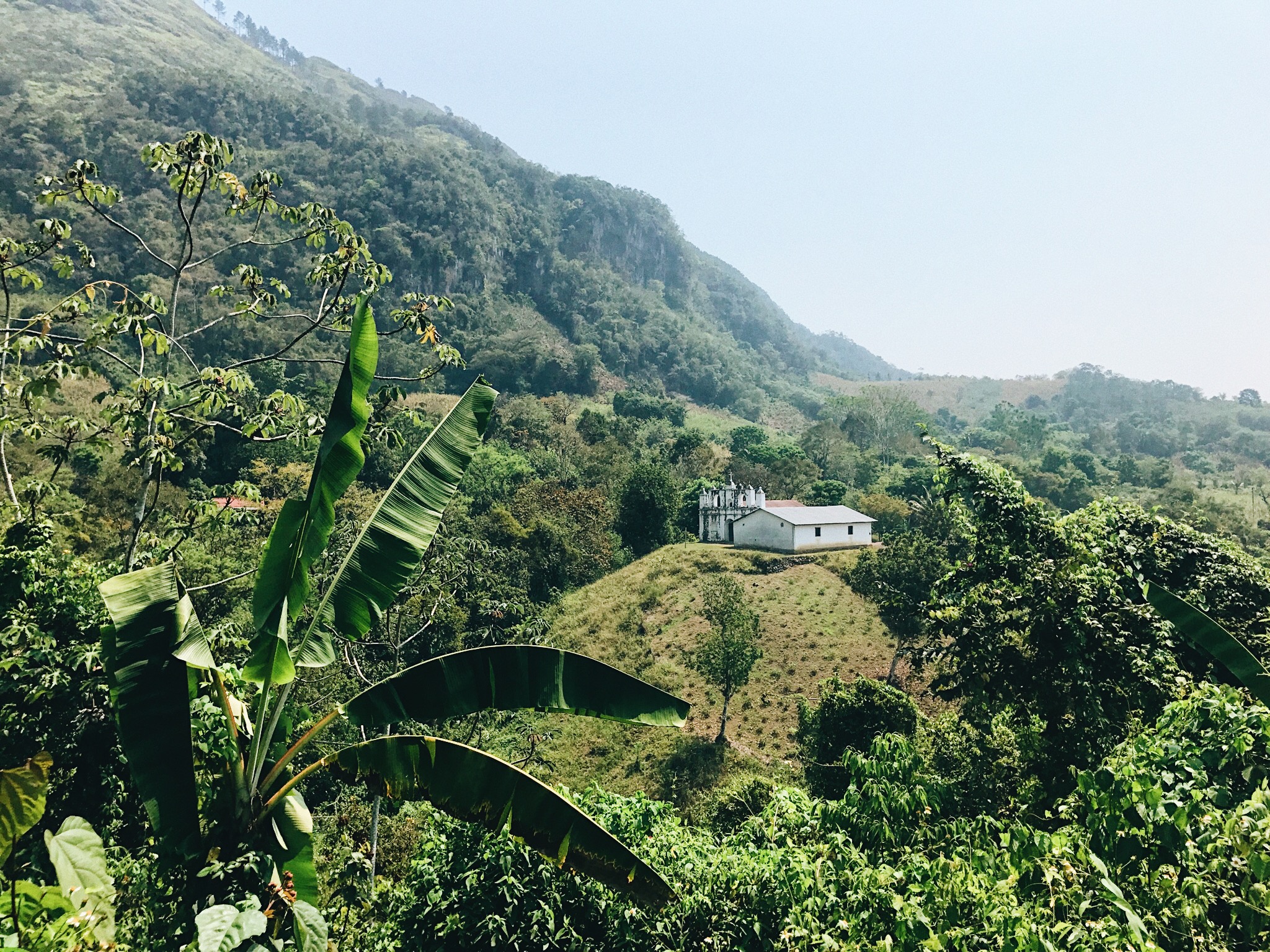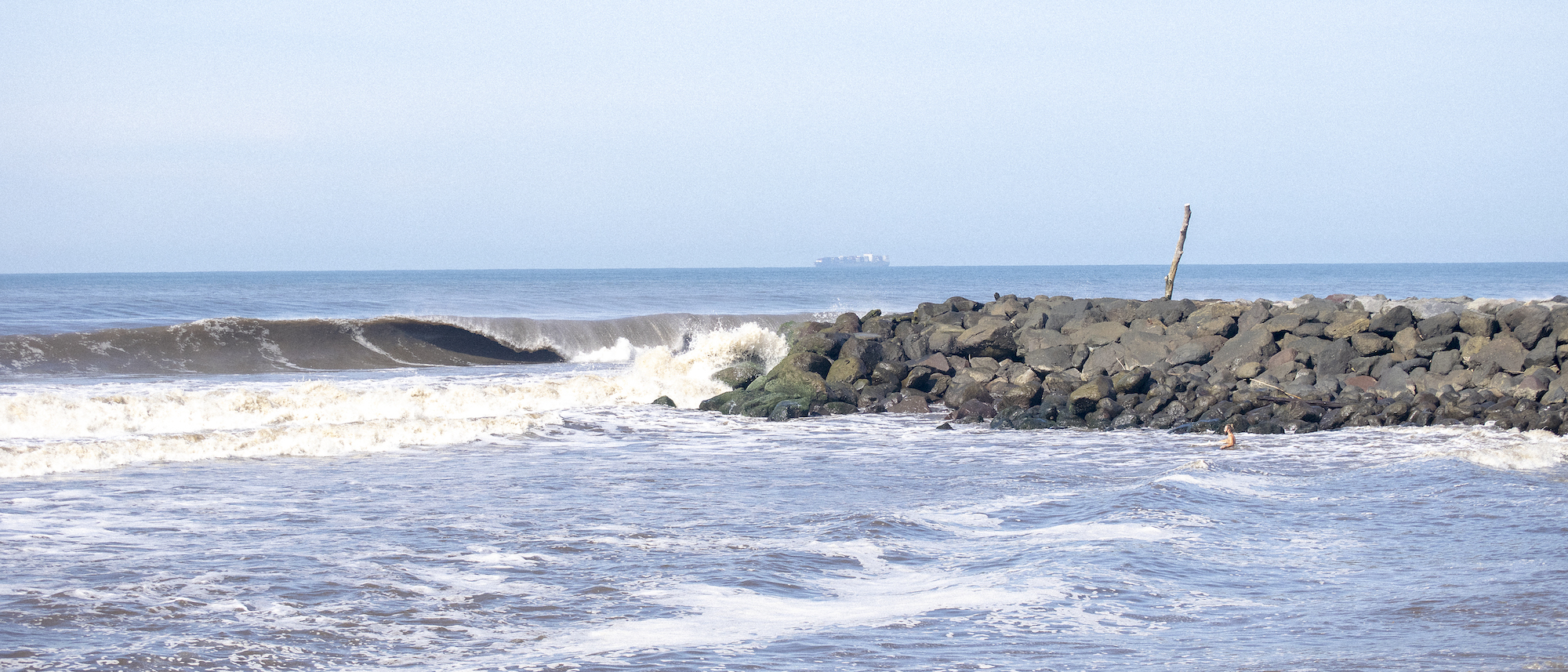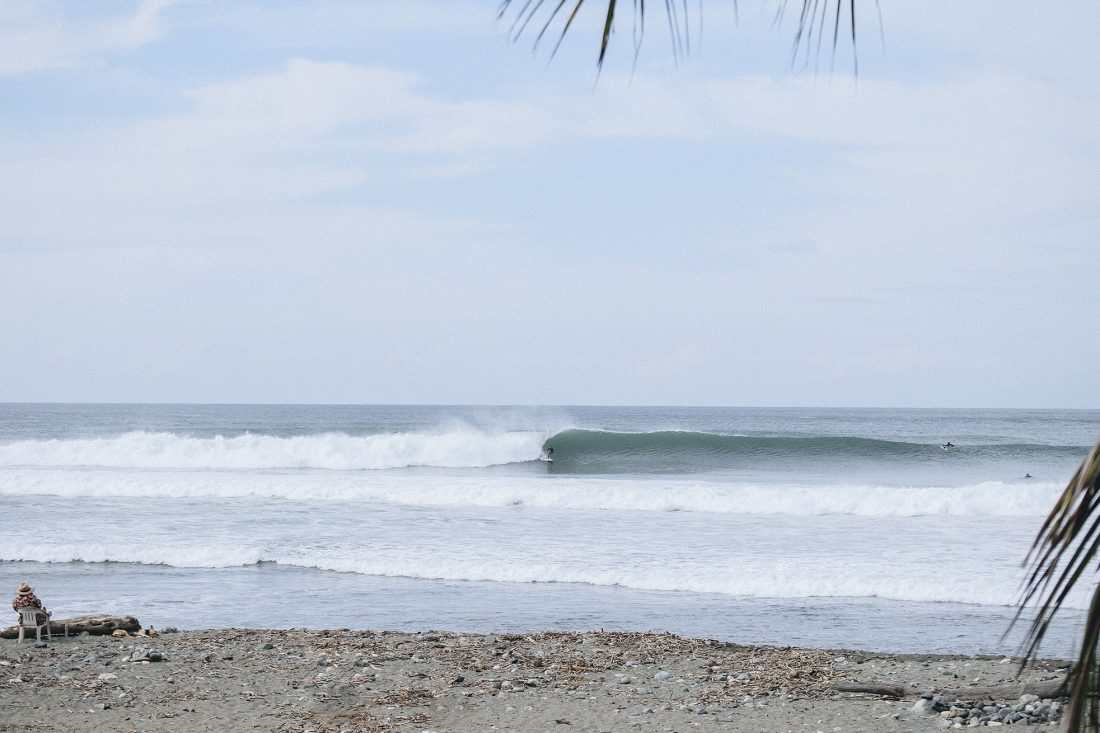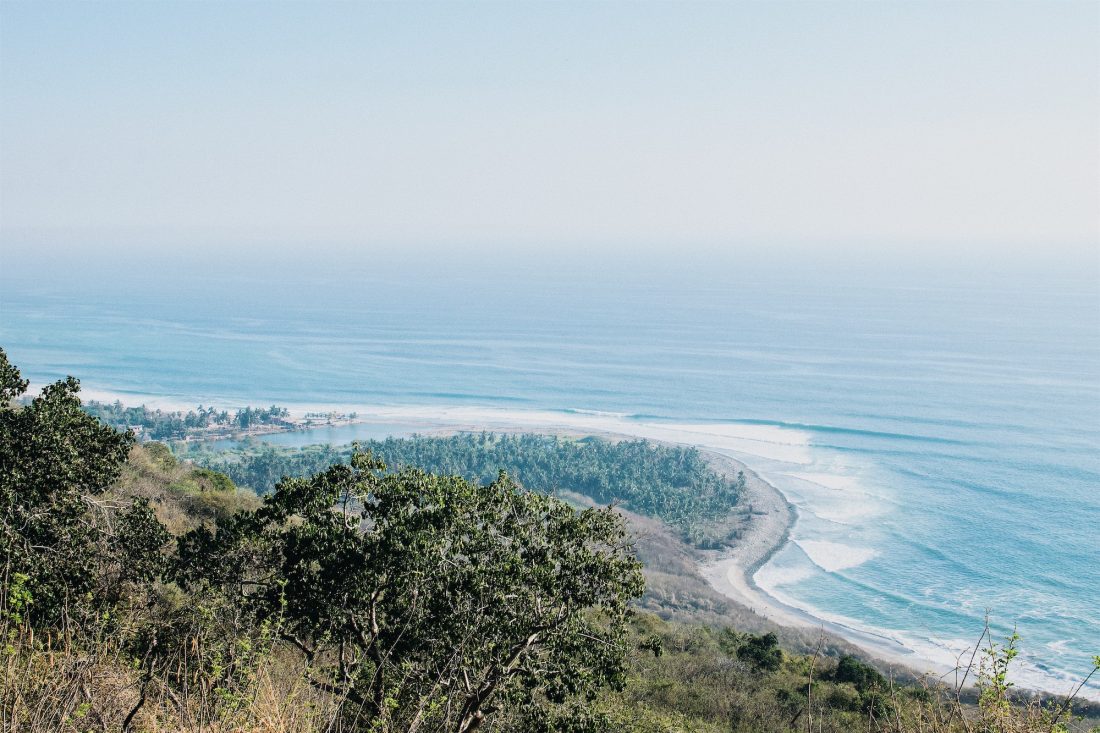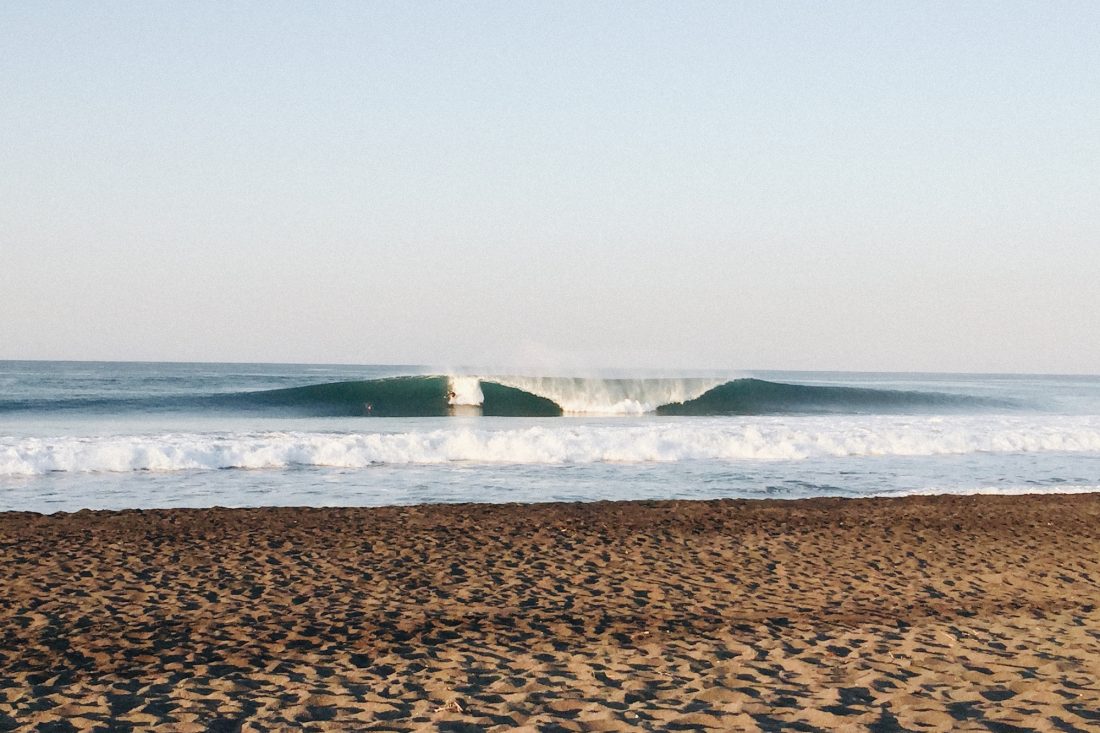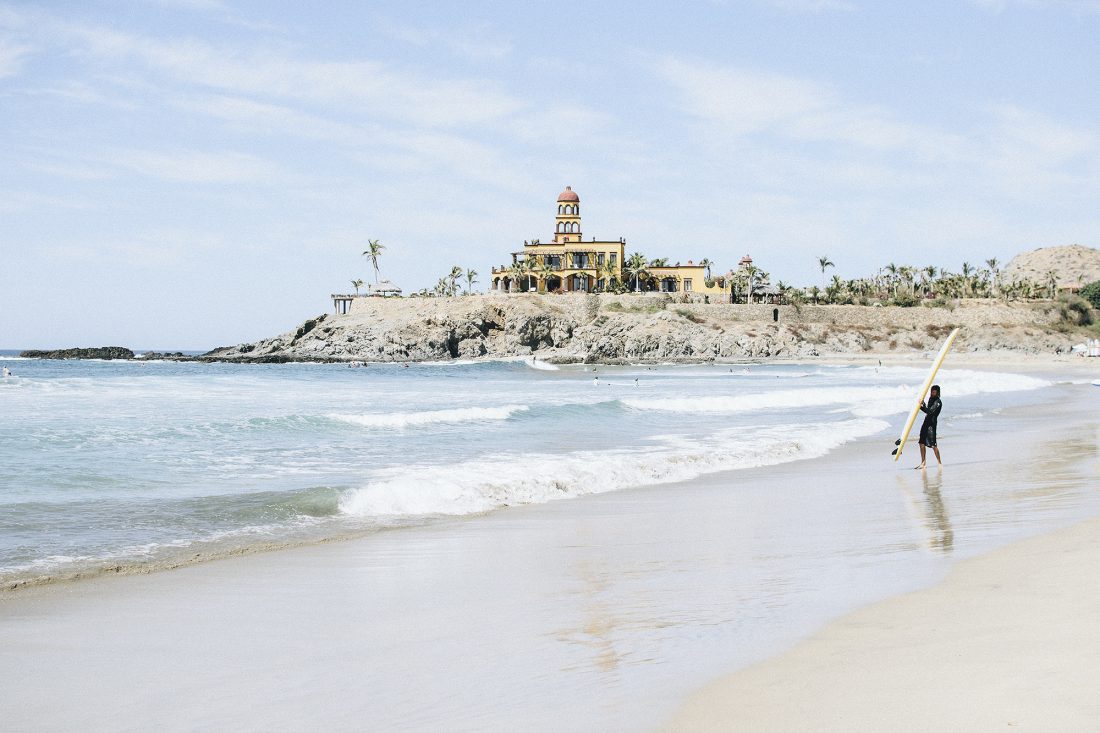Surfing Guatemala
Pack your bag and get the board waxed, you’re going to surf Guatemala!
Unlike its well known surf travel neighbours of Mexico and El Salvador, Guatemala remains rarely featured. In our opinion Guatemala is under rated as an international surf travel destination. No-one really goes to Guatemala just to surf… But it’s worth the adventure.
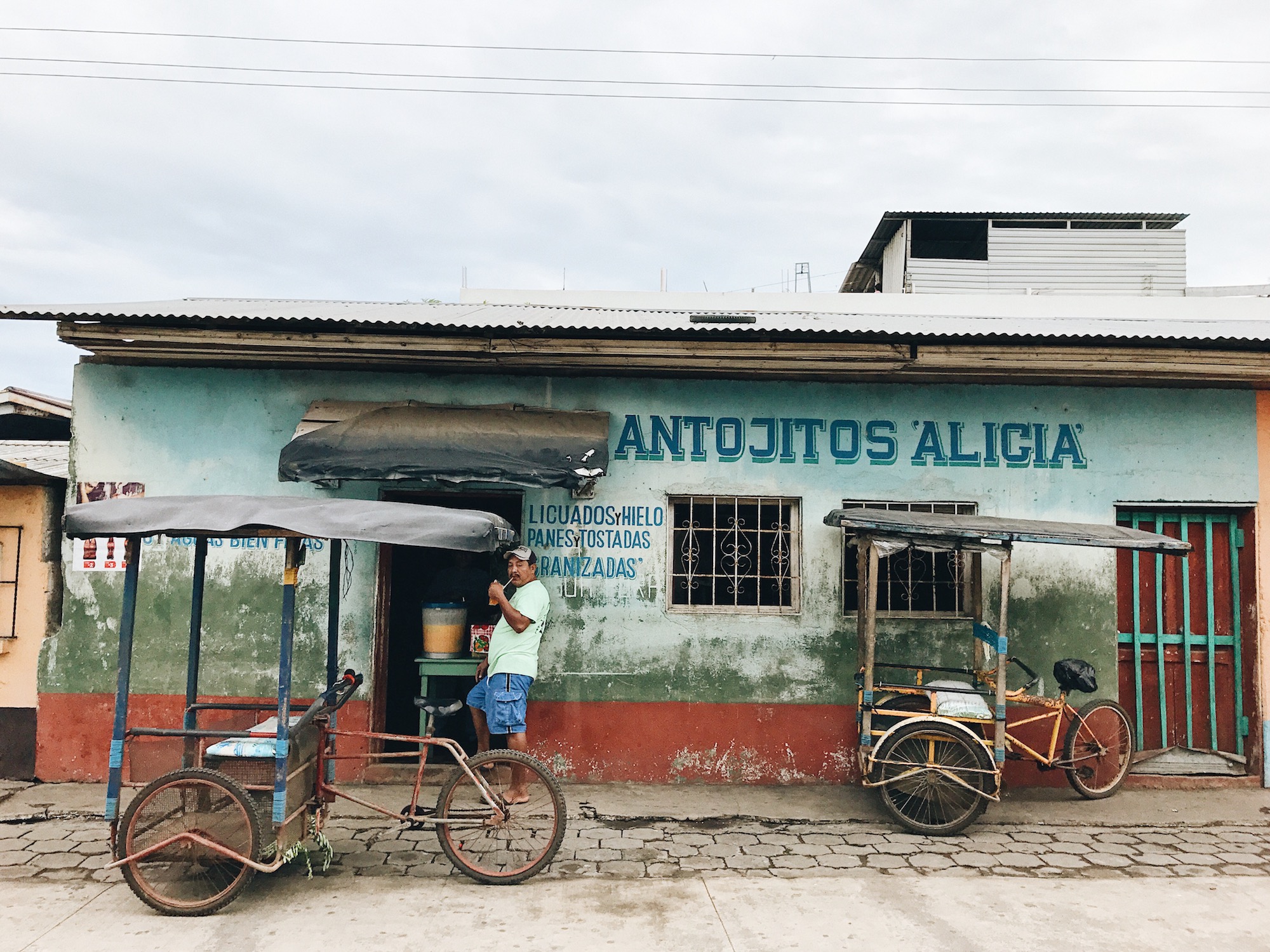
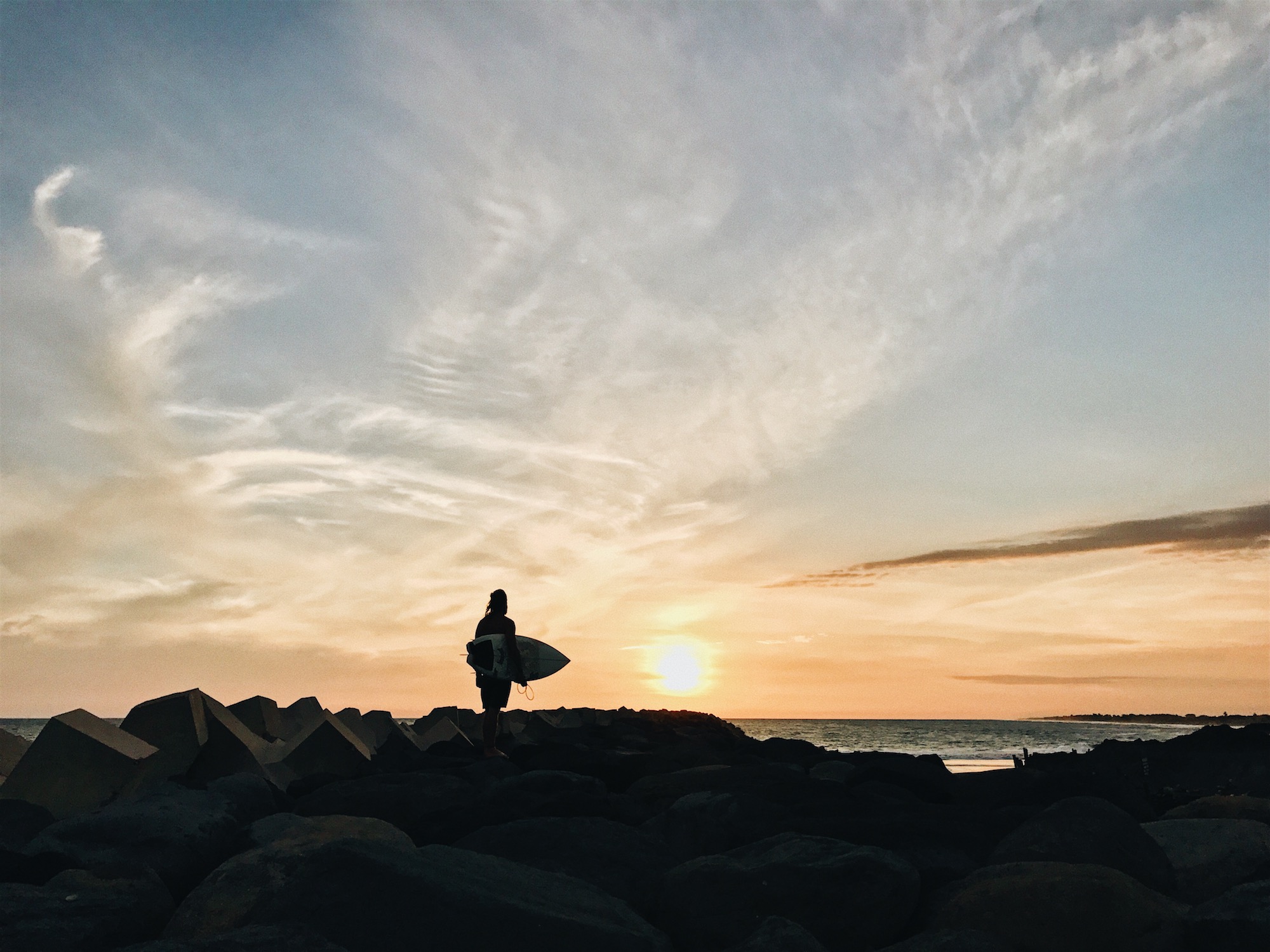
This post will not name any particular spot so if that’s what you’re after than you need to look else where. Instead this should be used as a guide to find your own waves just as we have and to also understand the country and it’s people a little bit better.
LET’S SURF GUATEMALA
The Guatemalan coastline is raw and undeveloped. Starting from south of the Mexican boarder it runs along the Pacific Ocean until the northern boarder of El Salvador. This tropical coastal wonderland provides uncrowded lineups, warm water and good swells for most of the year. We spent one month backpacking with a surfboard throughout Guatemala as part of our Central American leg of the trip. We didn’t have a van or car at that stage and instead we opted for local bus transport to get us around. Getting around Guatemala with a surfboard was intense but really fun. The local buses, better known as ‘Chicken Buses’ are a sight to see in themselves and are always packed - we’re not kidding. One of our rides was during heavy rain with 3 people per 2 person seat + 2 in the aisle and the kid next to us literally had 3 live chickens stuffed in his soccer bag on his way to see his mum for the weekend. In the end it all made for a proper adventure and one we’ll never forget.
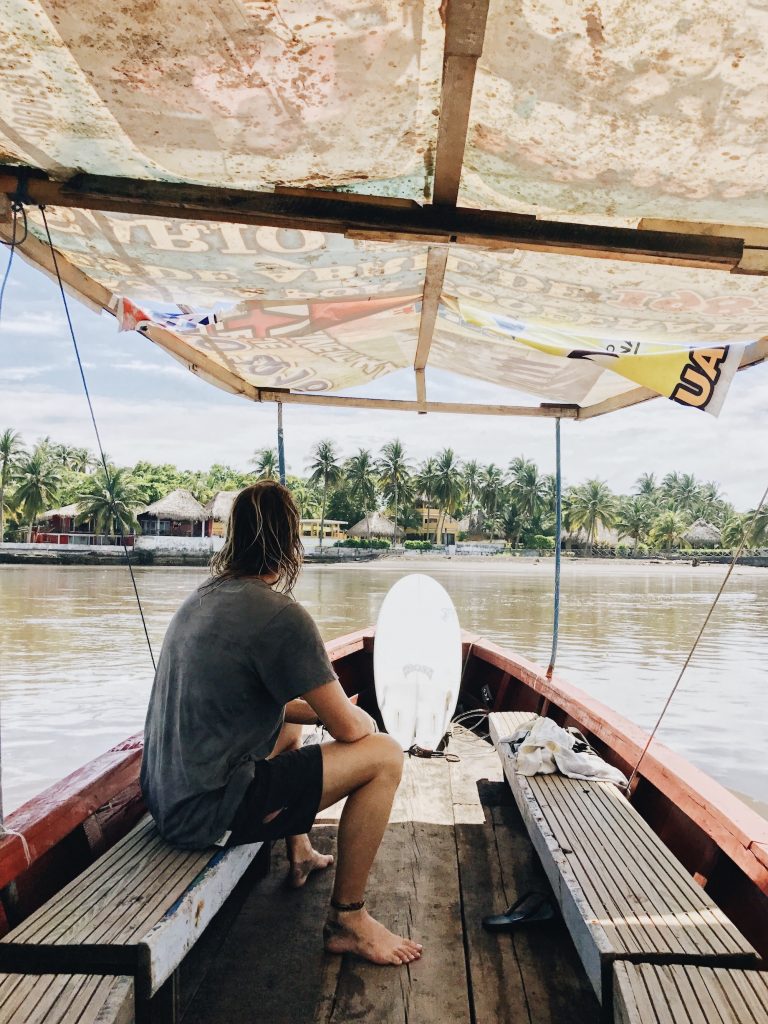
GETTING THERE
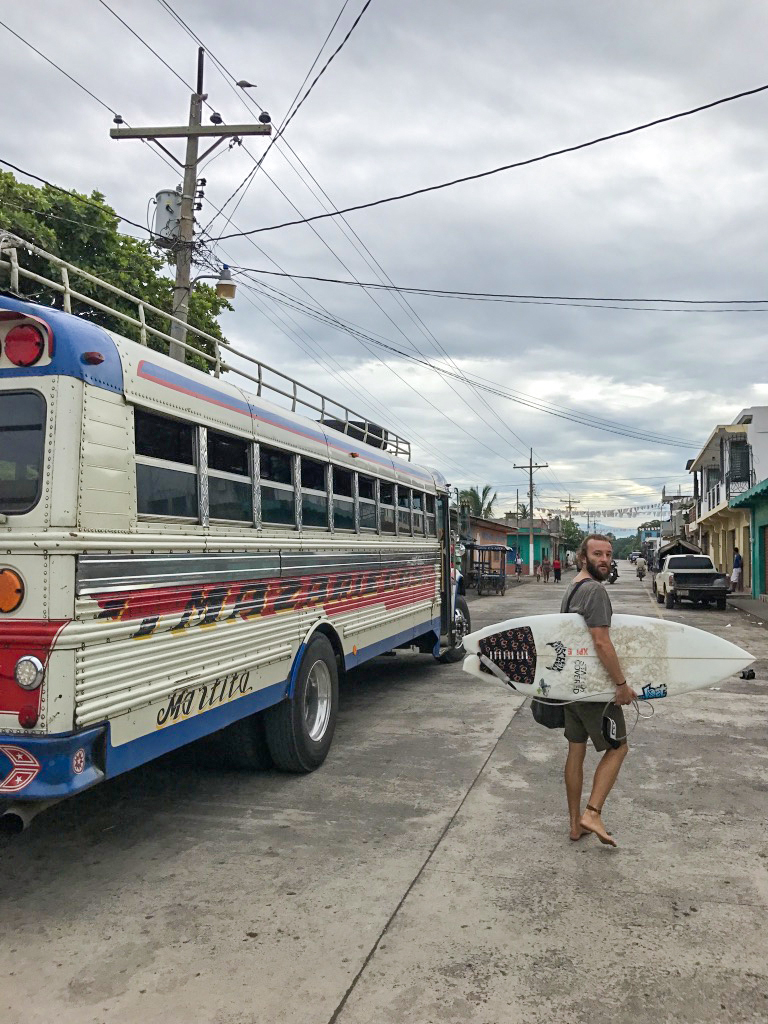
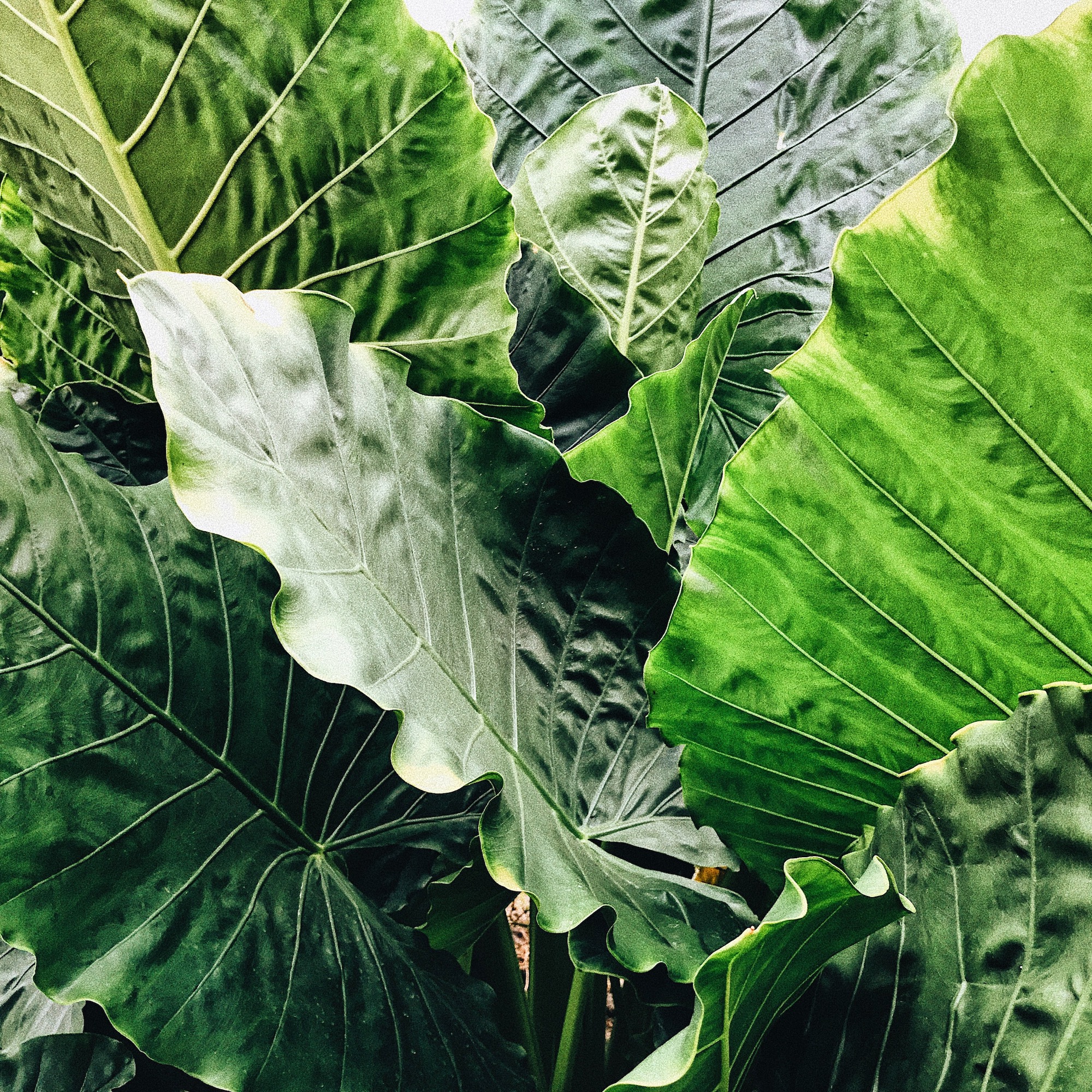
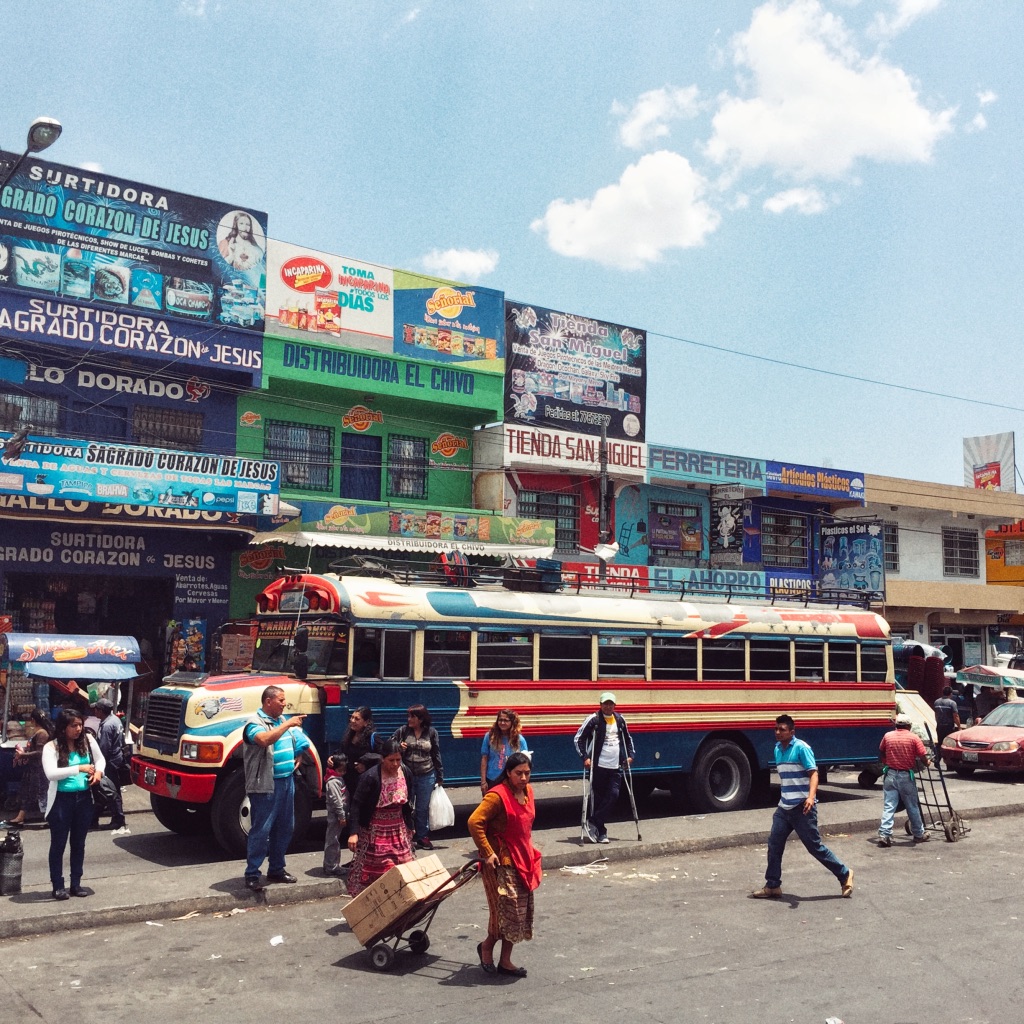
The two more common ways of getting to the surf in Guatemala is via overland from Mexico or El Salvador, or by air flying into Guatemala City. If flying into Guatemala we recommend taking a bus or shuttle to Antigua about 1 hour from Guatemala’s capital. The reason for this is Antigua other than being on the way to the coast, is a really cool city with plenty to see and do. After a day or more stopover here you will find ample transport options to the coast. Companies offer shuttles from Antigua or for cheaper transport you can travel via a chicken bus just as we did. Allow a full day travel so make sure you leave early in the morning if travelling like the locals. Coastal towns to the north can take up to 2-3 different buses and about 8 hours travel in total. Towns located centrally and along the south coast will be a couple hours less and at least 2 different buses. Shuttles however generally take you directly from Antigua straight to your intended destination. From Antigua, we began our trip in the north and followed the coast down, town hopping to check different spots along the way. If you happen to have your own set of wheels this is also easy enough to do. There is a highway that runs from Mexico to El Salvador parallel to the west coast of Guatemala roughly 30km inland. This route can be followed and will allow you turn off the highway at a few different locations and drive out towards the coast. Guatemala is generally a safe country to travel as long as you are doing the right thing. As a foreigner, caution should always be exercised with your valuables as the country does have a high crime rate for robberies. Just be aware of this and travel smart - only travel during the day, never drive or walk alone at night. We’ve travelled extensively throughout most of Latin America being street smart and without incident.
By Air – Guatemala City, the country’s capital, is the cheapest to fly to. From the airport you can easily rent a car, catch a bus or a shuttle. For detailed information about flights and flying, check Skycanner. A recent online search found round-trip flights to Guatemala City, direct flight around US $200 round trip for travel in 3 months – from the major cities of the United States.
By Bus – To get to Guatemala, your cheapest option is to arrive by bus. The bus journey from the Mexico, Belize, Honduras or El Salvador is about 12 hours. Once you are in Guatemala, the local and tourist buses are a cheap and easy way to get around with plenty of buses running between most destinations. You won’t generally need to pre-book a ticket. Otherwise it’s best to arrive at the station just before your departure and compare the prices between each bus company. The difference in price will vary depending on the quality of bus and duration of the trip (buses can be direct or many stops).
By Car – Driving to Guatemala from the United States, Mexico, Belize, Honduras or El Salvador will take you several hours but it is our favourite option. It is generally safe to drive in Guatemala as long as you stick to the main roads and drive only during the day. Never drive at night. Traveling by car throughout the country allows you to travel at your own leisure and comfort.
By Rental – If you’re not having your own car/van, to properly explore and surf Guatemala consider renting a car for your visit. Having your own car will give you more flexibility than using public transport options and, in some cases, offer you access to places which are otherwise difficult to visit without the use of a car. We haven’t tried to rent a car in Guatemala but found out after cheap option via Skyscanner.
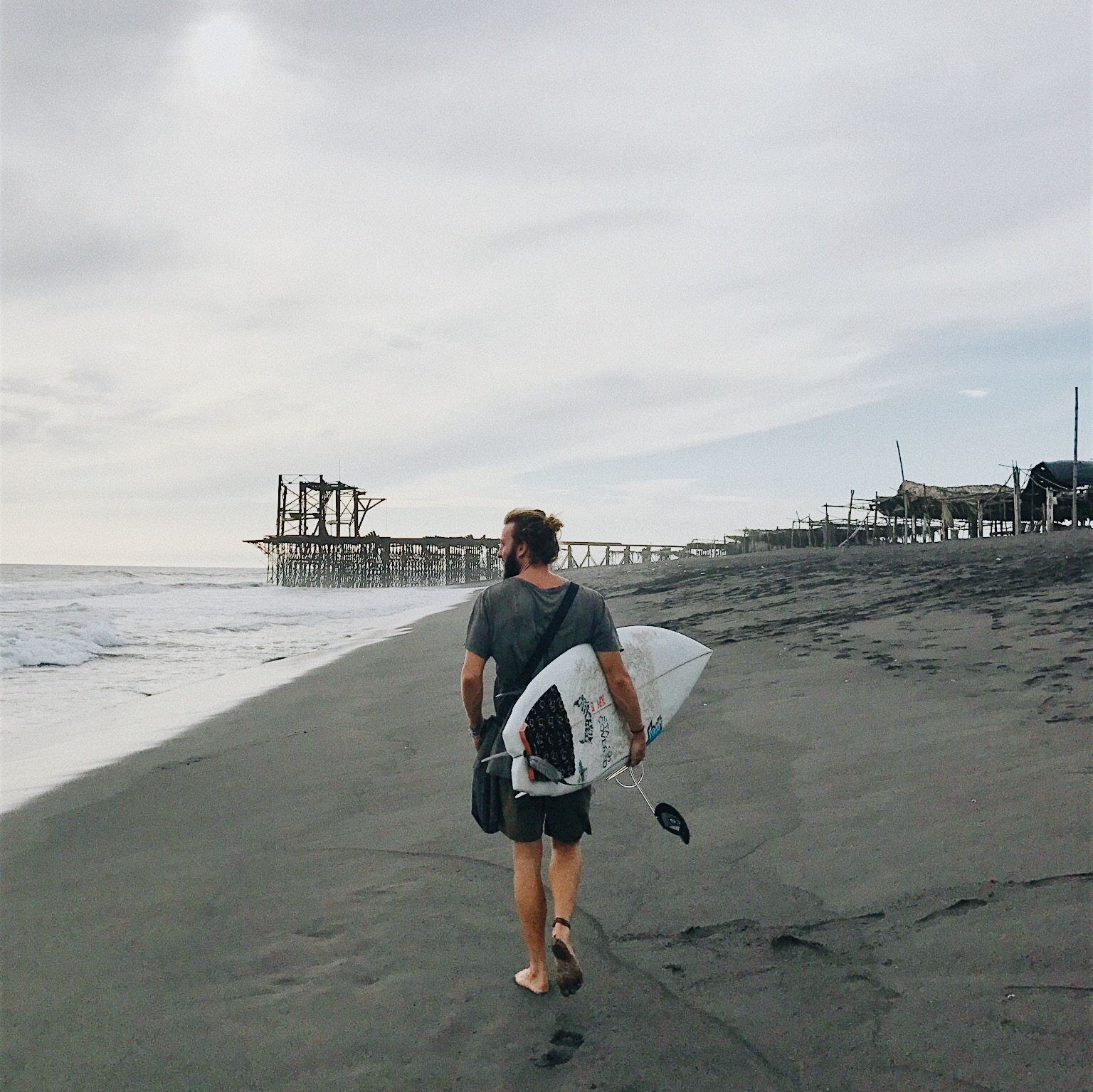
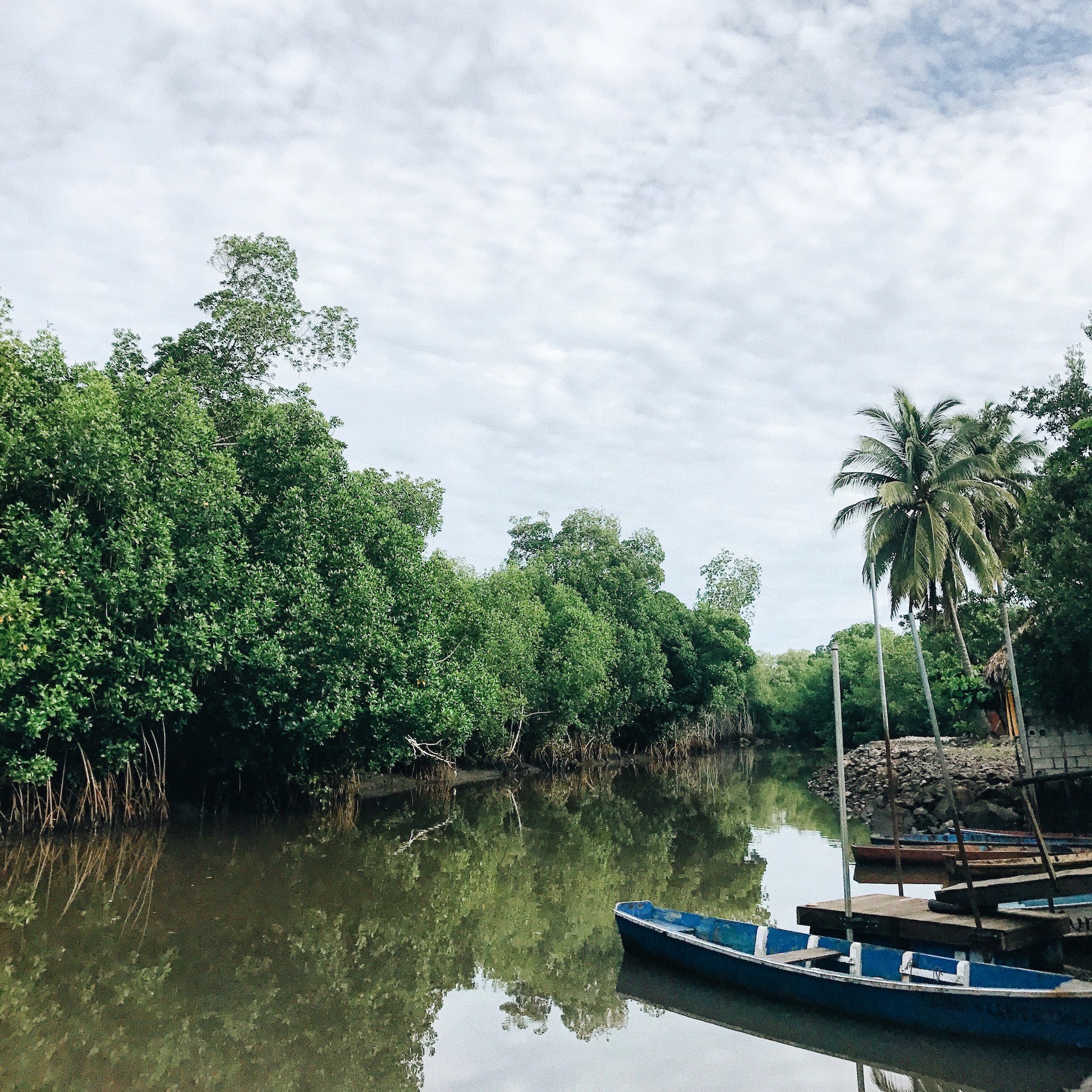
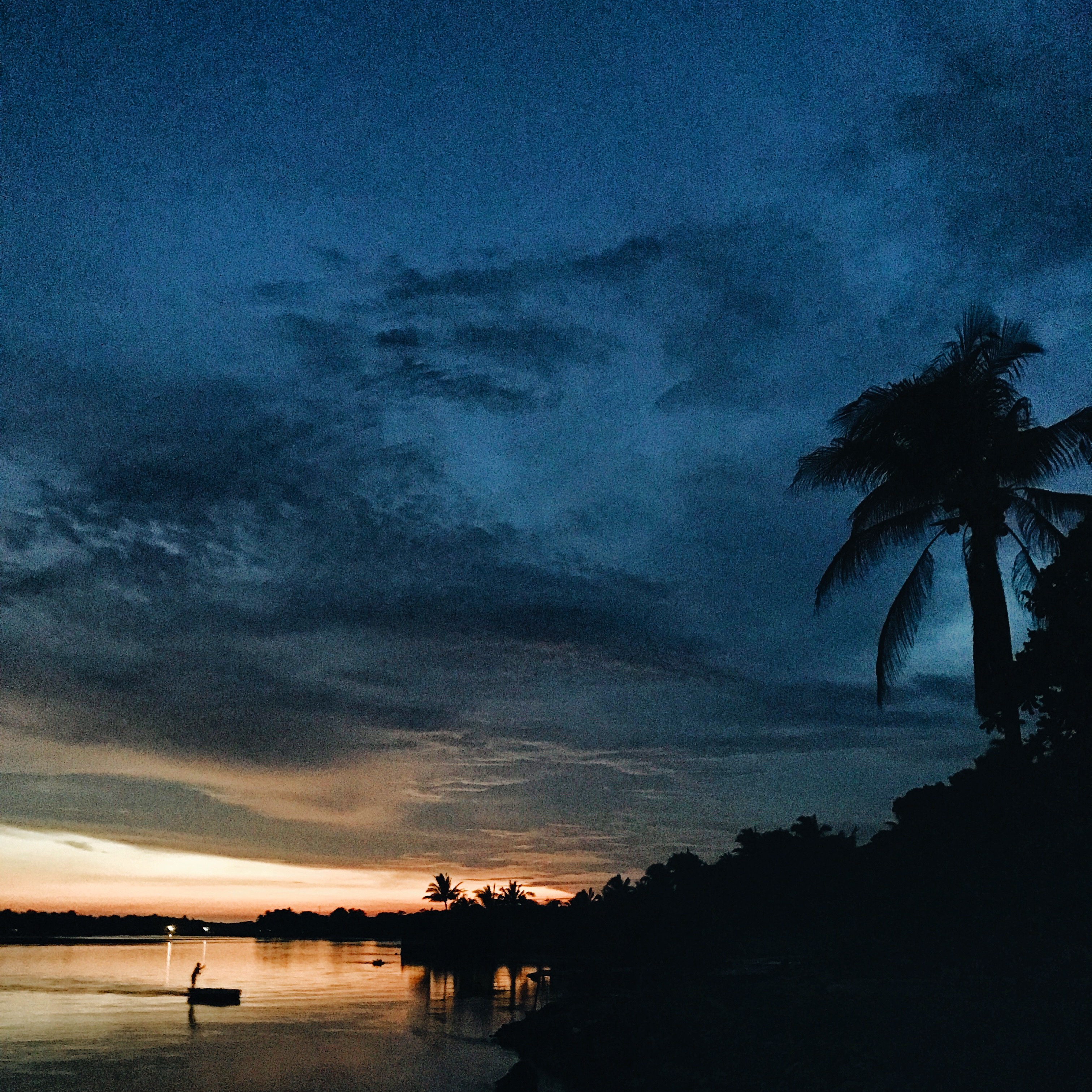

LET’S GET PREPARED
Understanding everyone has different time and monetary restraints, we have put together some recommendations to hopefully assist you getting to Guatemala and starting your surf trip.
On arrival to the coast of Guatemala we were greeted with big friendly smiles from the locals. The Guatemalan coastline is not really on the radar for foreign tourists so the residents there are always warm and welcoming to see new faces. It was a nice feeling to have people coming up to interact and be curious with us. In our experiences when we’re approached by locals in places as foreigners, it’s generally because they have something to sell and are trying to make a living. Here it’s just because they want to talk to you and ask why we chose their place to visit. Obviously we had to use out best Spanish. Throughout Guatemala and especially in the smaller coastal towns you will not find many people who can speak English.
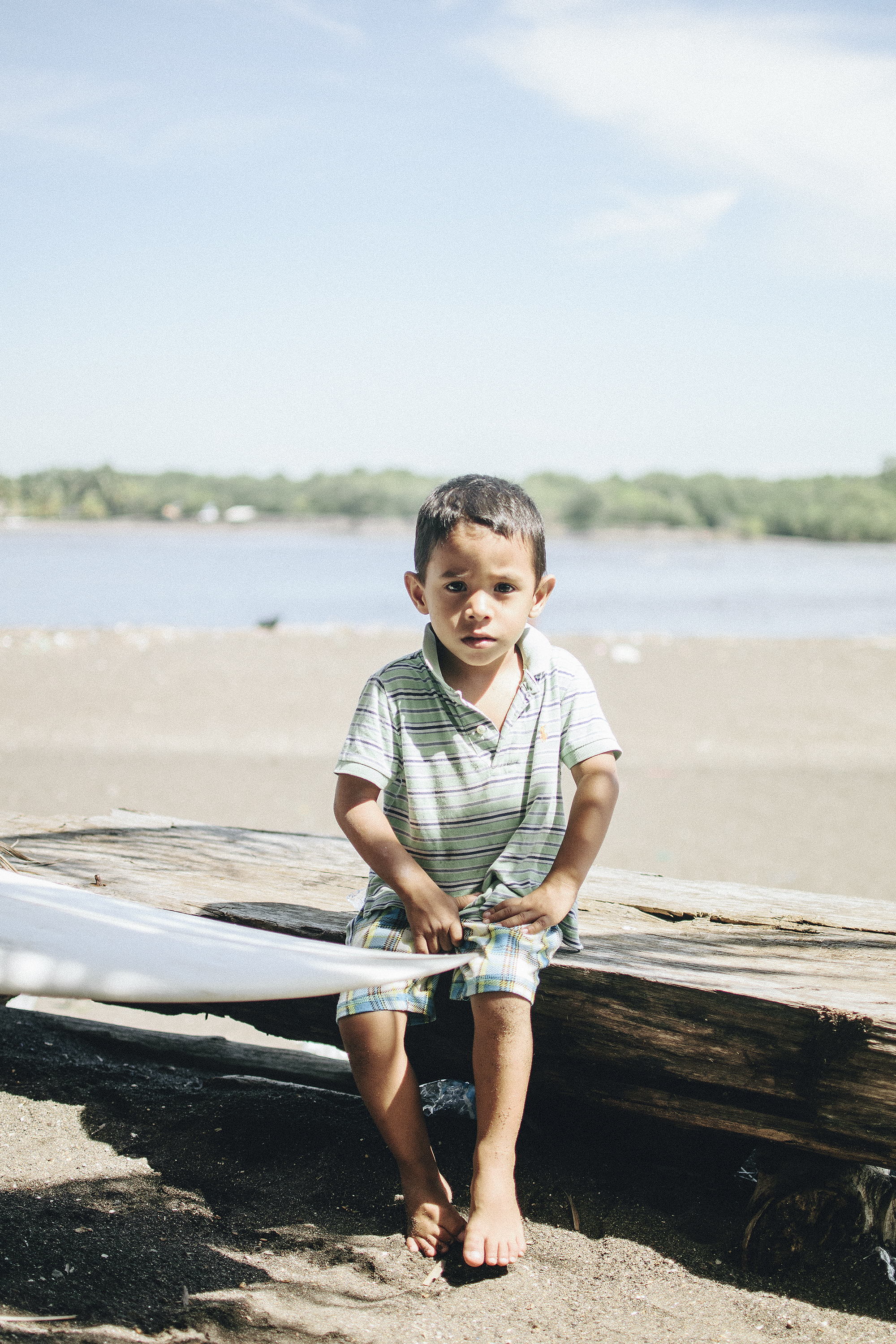
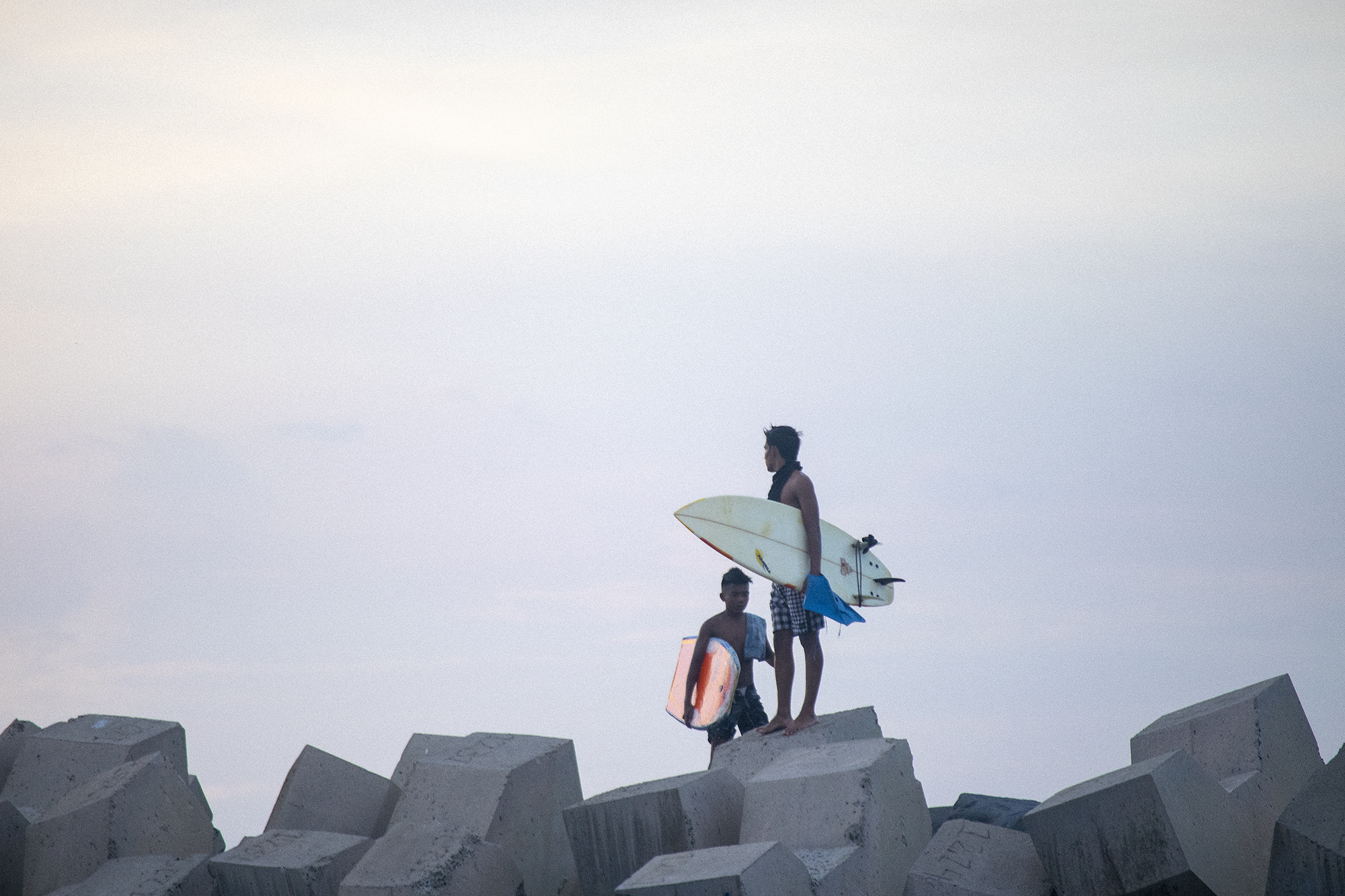
Guatemala is also one of the only few surf spots we’ve been to where the locals encourage and push you onto the waves. It was a really fun and relaxed surf scene and no one was trying to regulate the break. Everyone was there to improve their surfing while having a good time. Most of the kids equipment might have been old and some boards were repaired from snaps but it didn’t stop them from shredding and making the most of it with whatever they had. They all helped each other out too, big or small it didn’t make a difference.
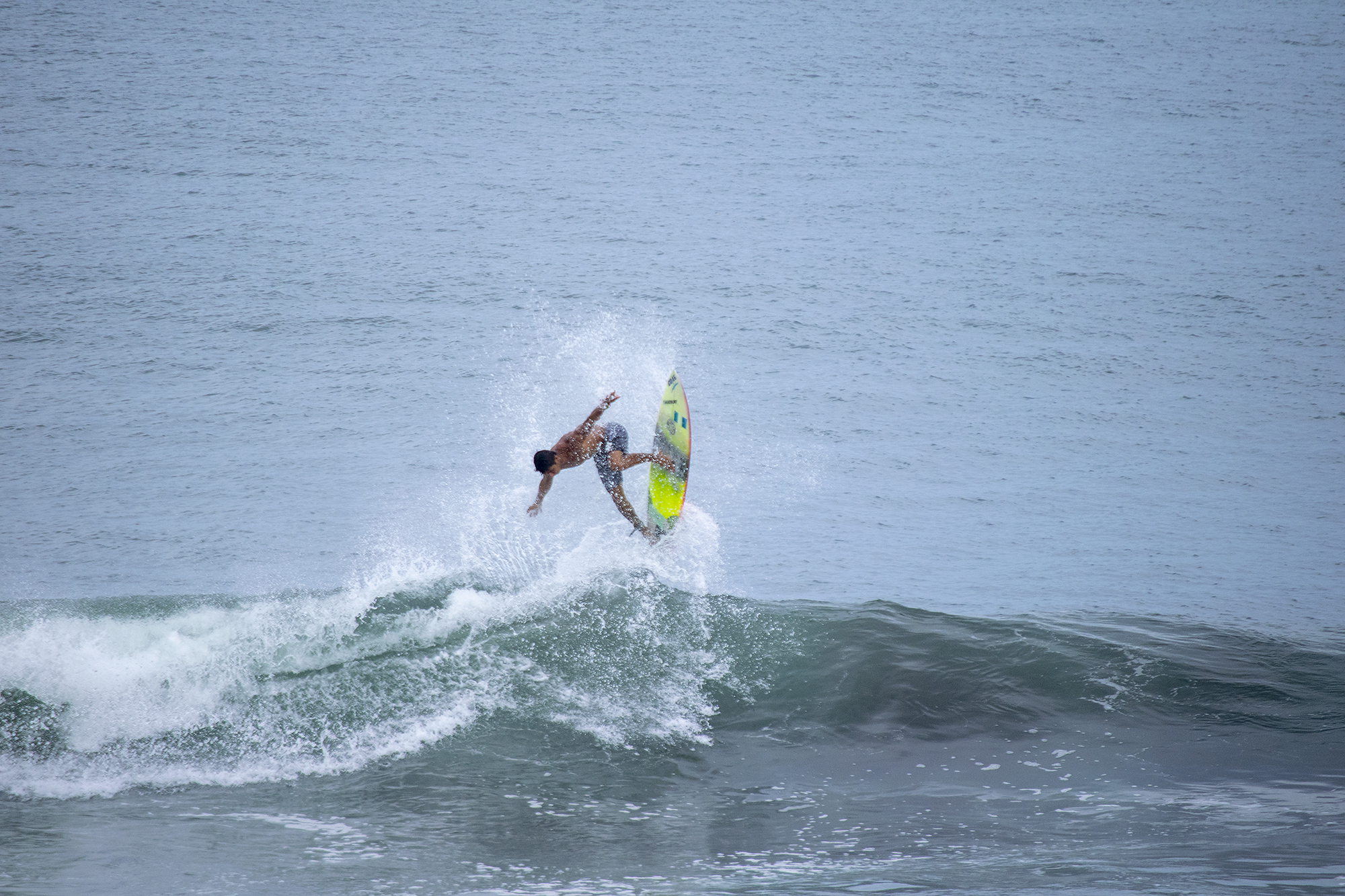
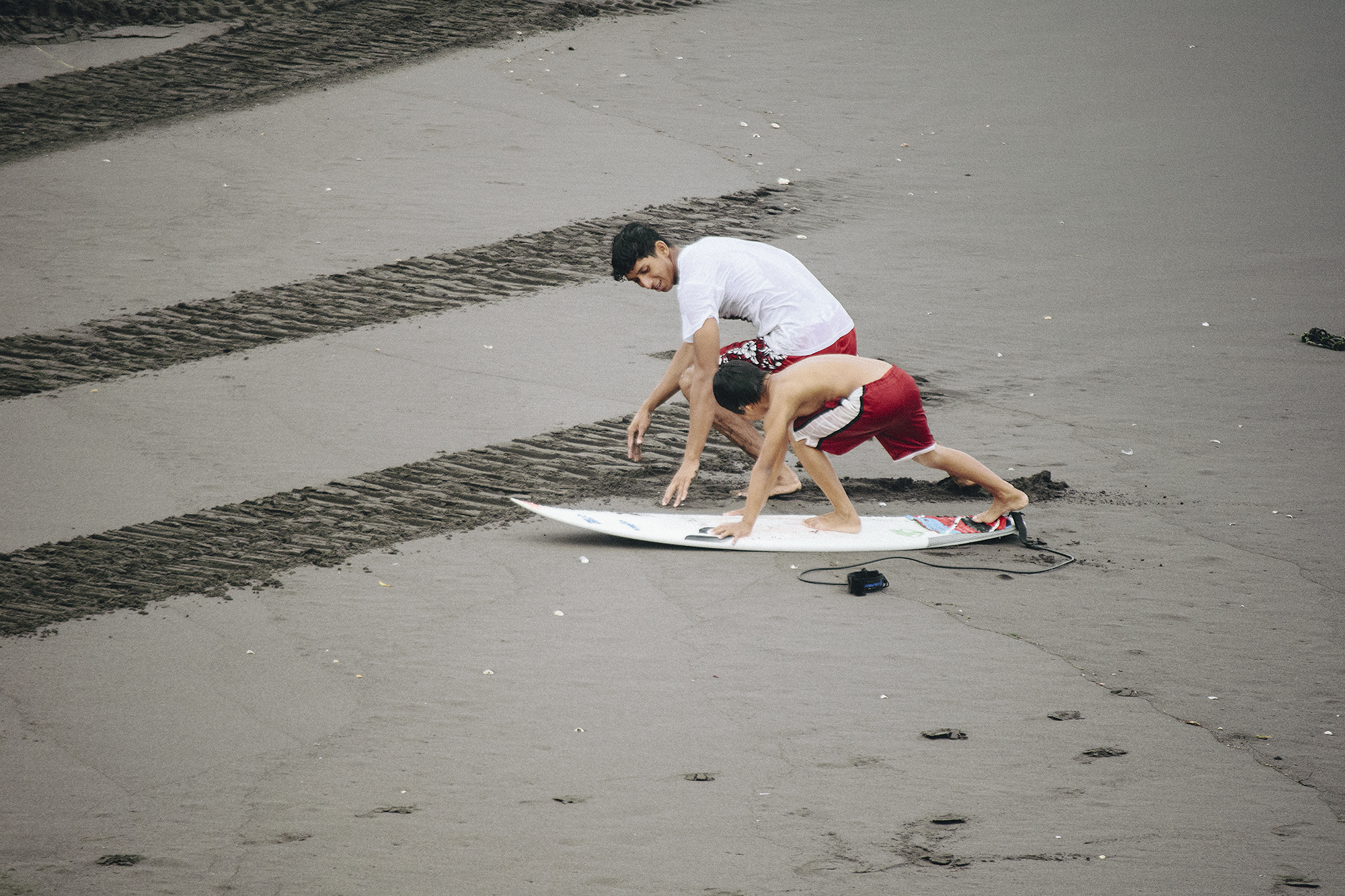
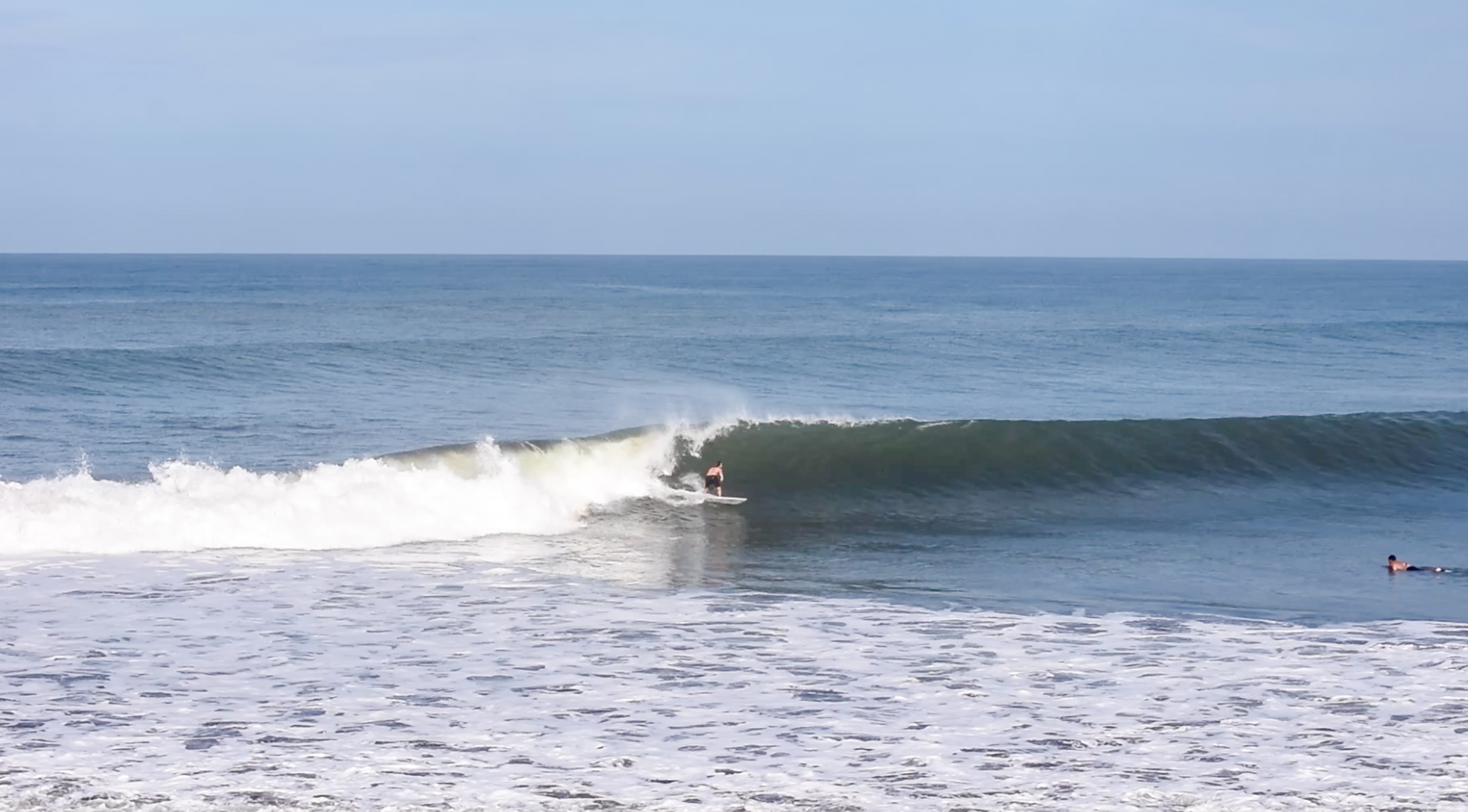
What we enjoy most about surfing in Guatemala is you’ll never need a wetsuit. Even throughout winter the water temperature remains around 28 degrees celsius. The crowds are also consistently low especially mid week there is only a handful of people in the water. The weekends tend to see a few more numbers but even still are considerably low. As for the climate out of the water, spring and summer occur from April to September and are the hottest months in Guatemala. The more temperate climate occurs in the autumn and winter months from September onwards when the high summer temperatures begin to ease. Although still warm, the cooler temperatures bring an end to the monsoon rains.
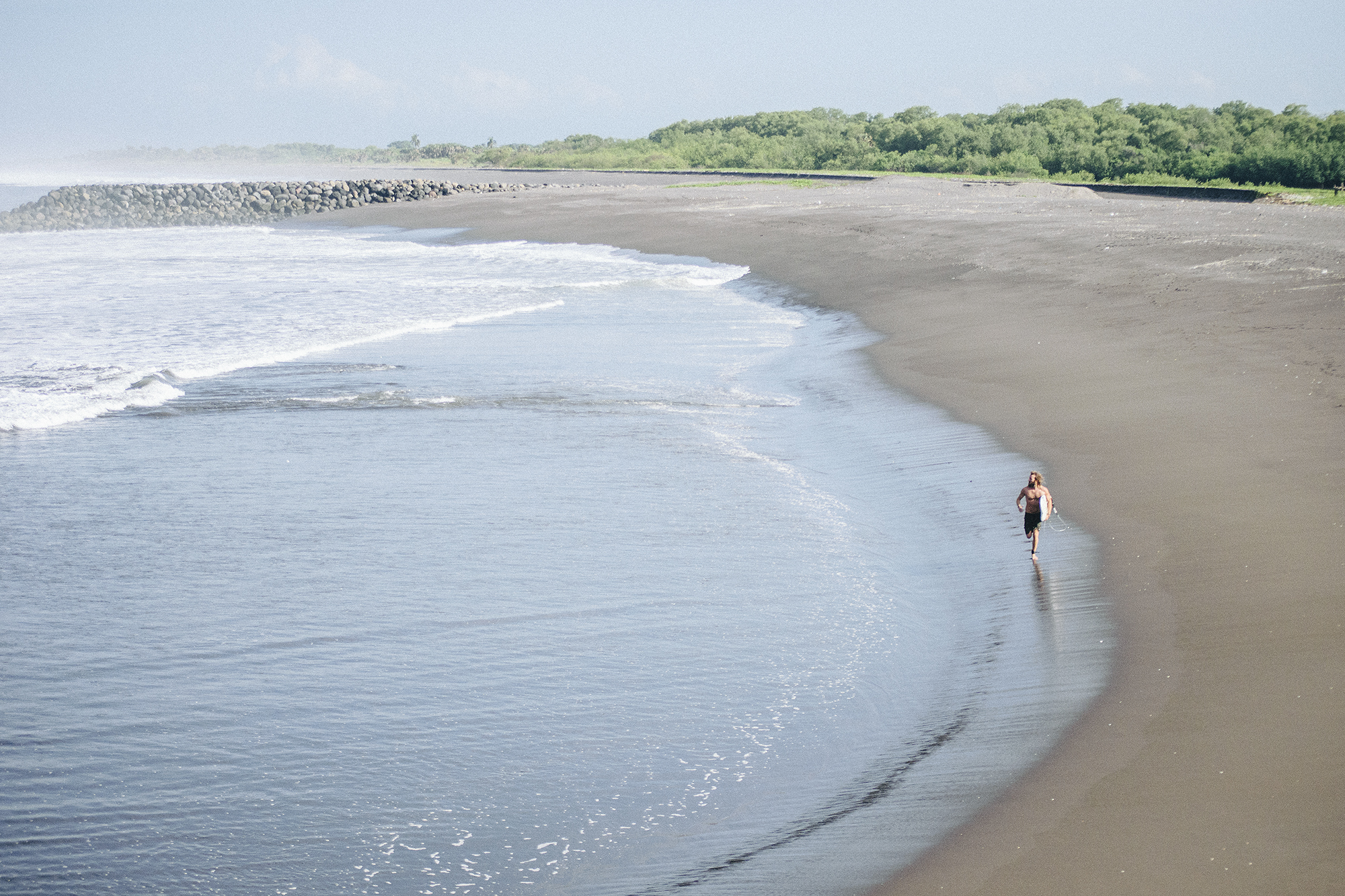
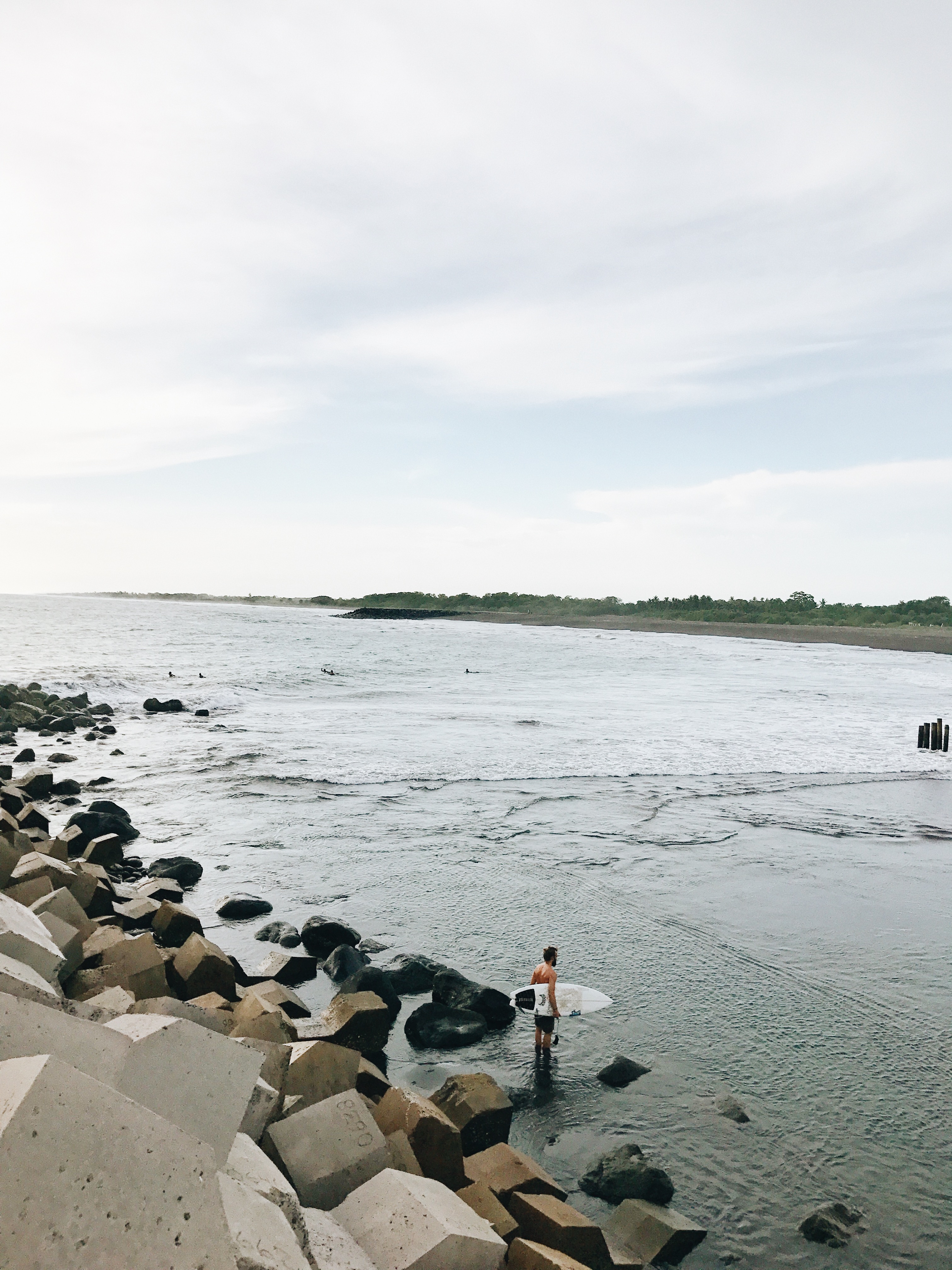
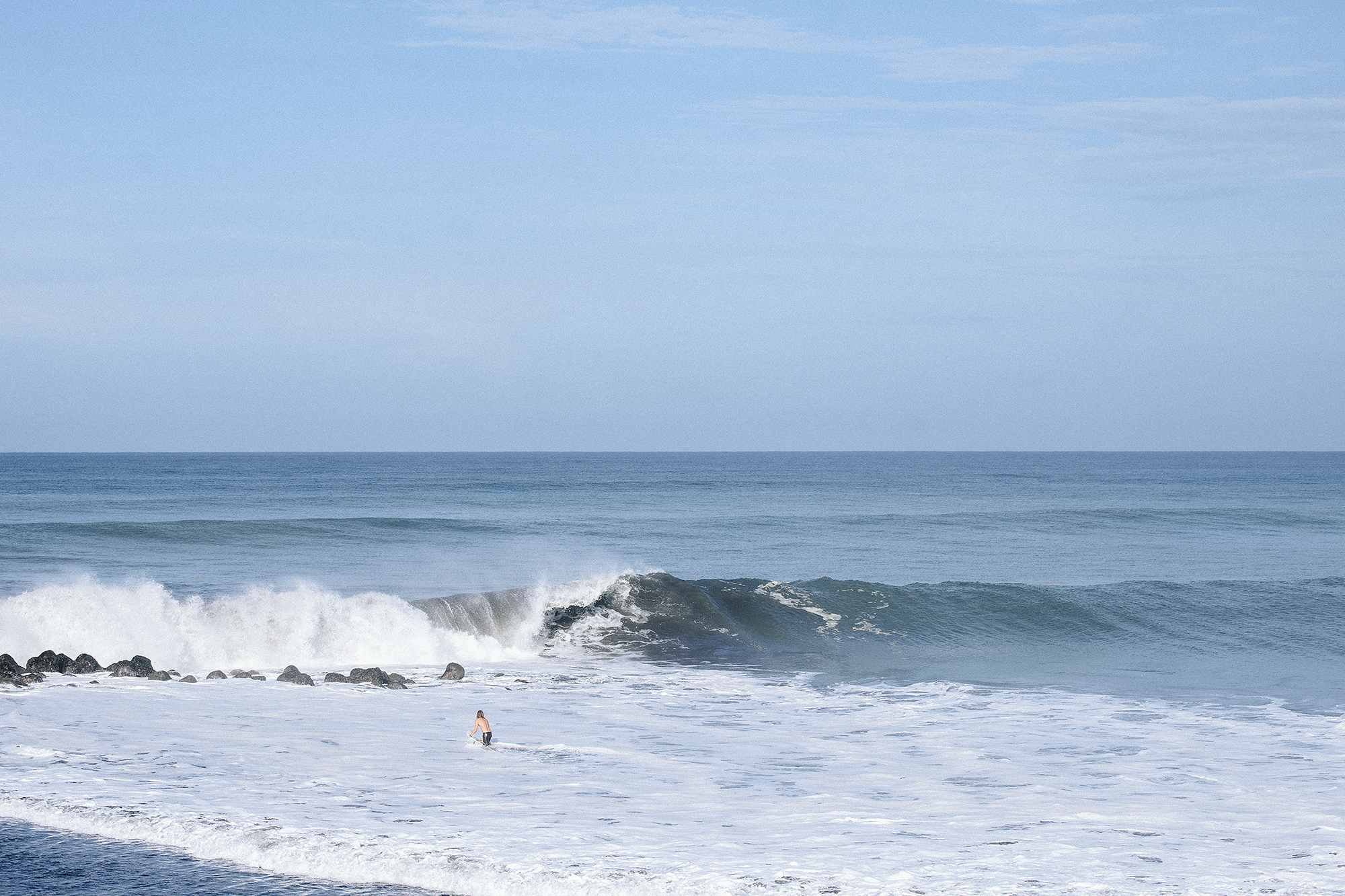
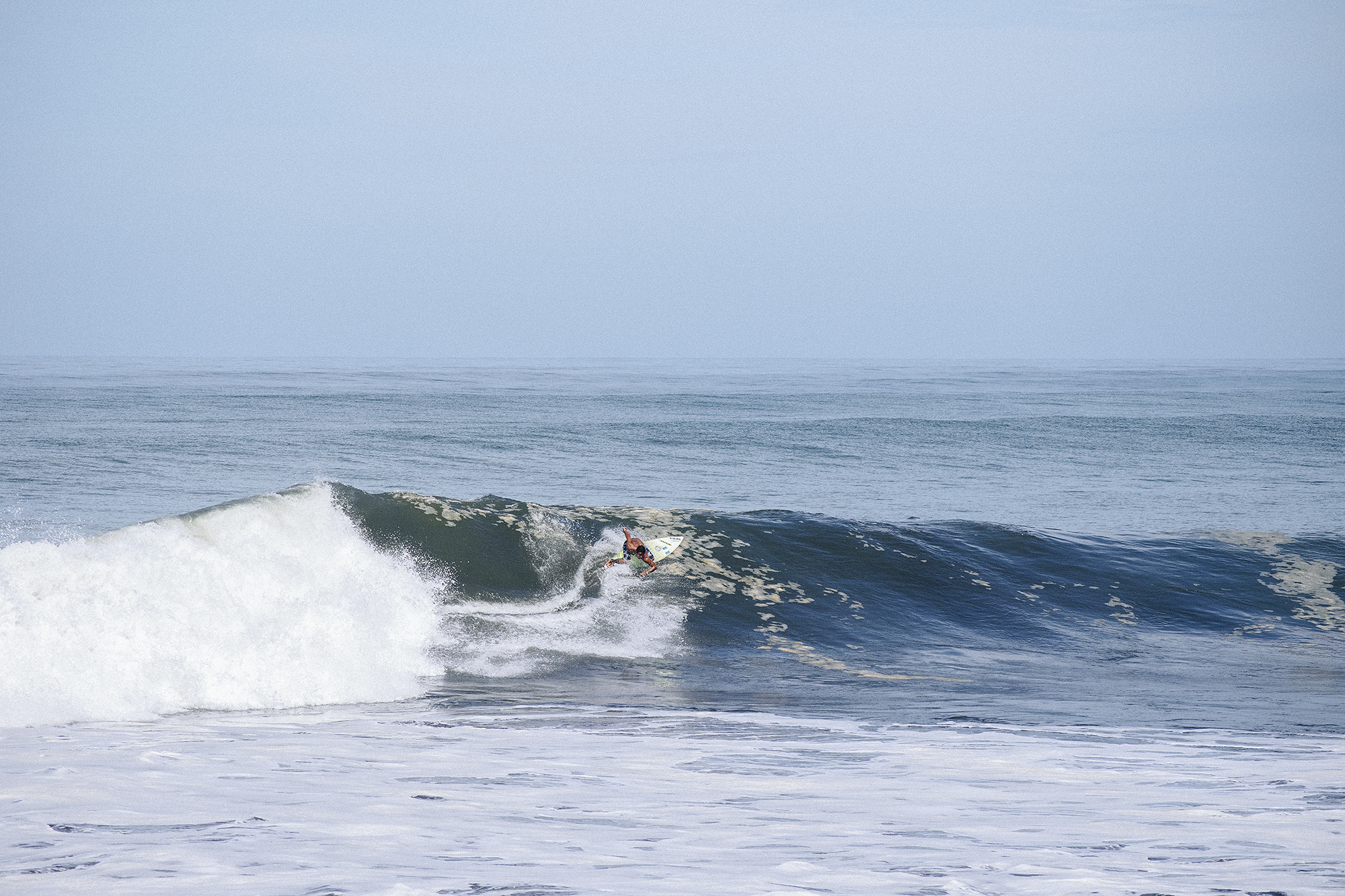
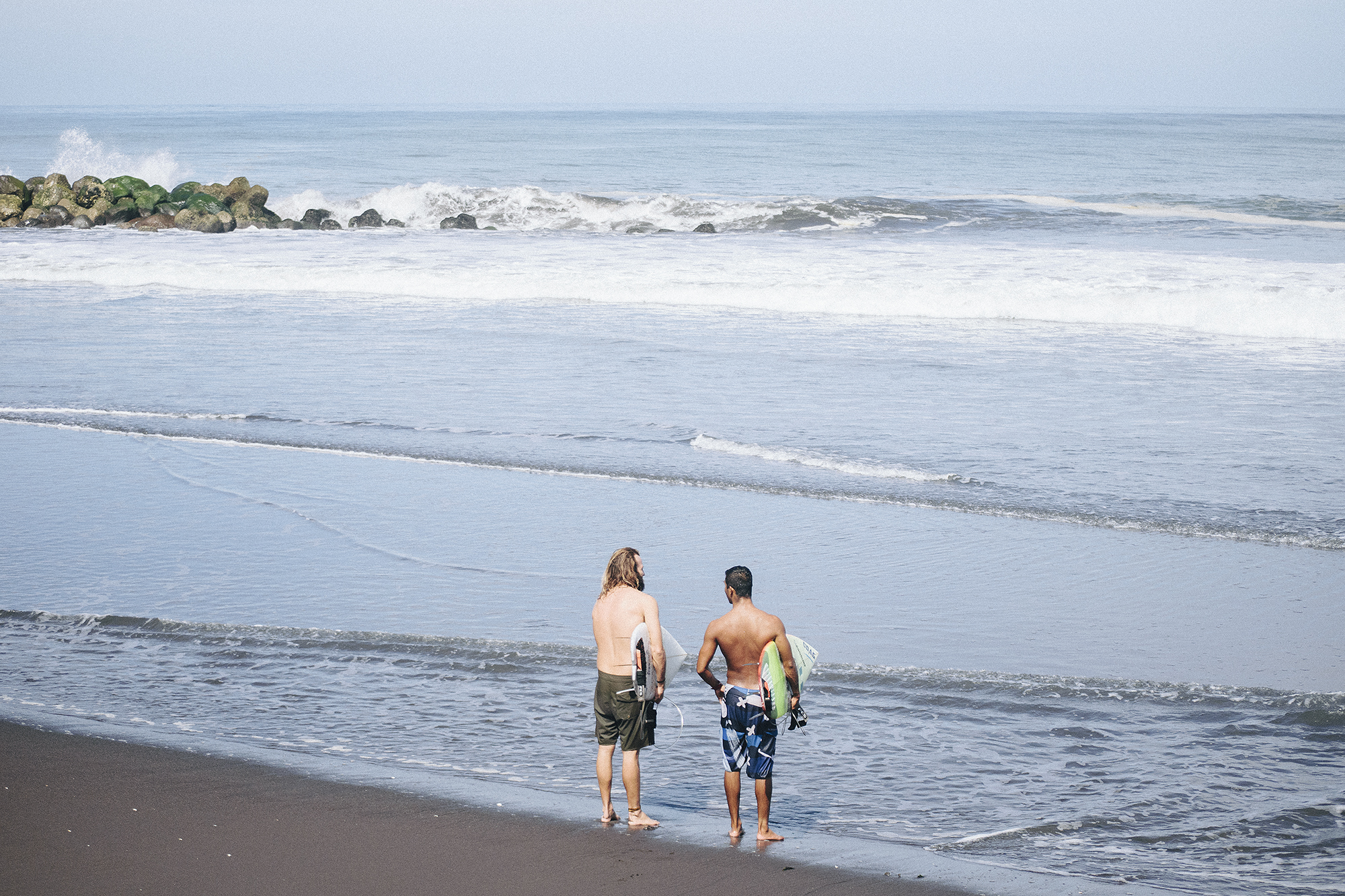
LET’S MASTER THE BREAK
The type of waves on offer in Guatemala are beach breaks, river mouths and jetties/breakwalls with the majority of these breaks capable of cleanly holding up to double overhead in size.
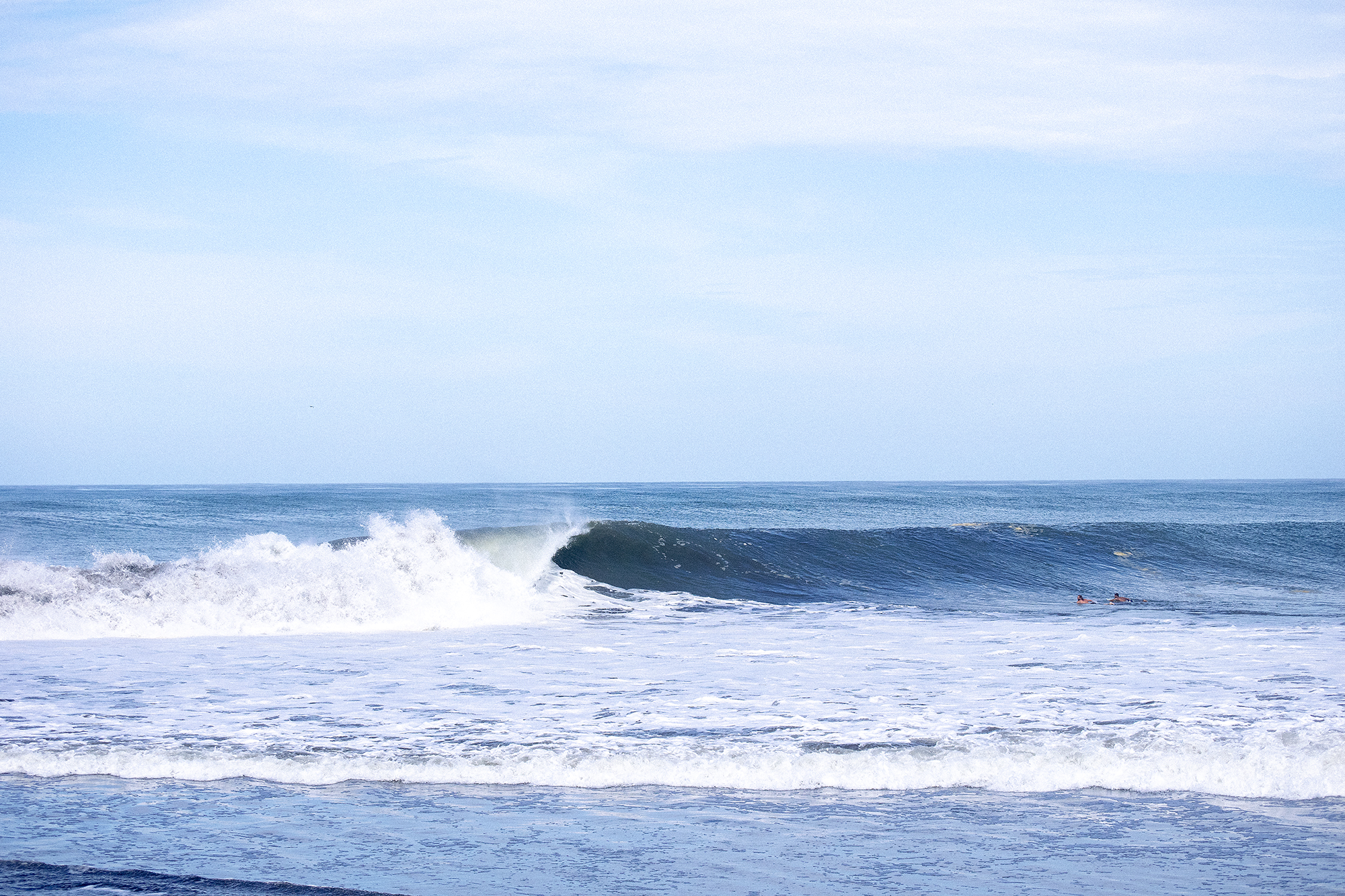
The best time to surf is May to October in the wet season as this is when the bigger swells roll through. The swell direction hits from the south west out of the Pacific. It’s worth hanging around for if you know a decent swell is on its way.
Locals Name: Guatemala
Skill Level: All Levels
Best Season: Summer
Crowds: Low
Wave Type: River Mouth/Pier/Beach
Wave Direction: Left/Right
Wave consistency: Consistent
Bottom Type: Dark Sand
Best Tide: Low to mid
Wind Direction: North
Best Swell Direction: South West
Water Temperature: Warm
Location: Easy to locate
Access: Good all vehicle access
Road Type: Paved road
Parking: Good, sandy carparks
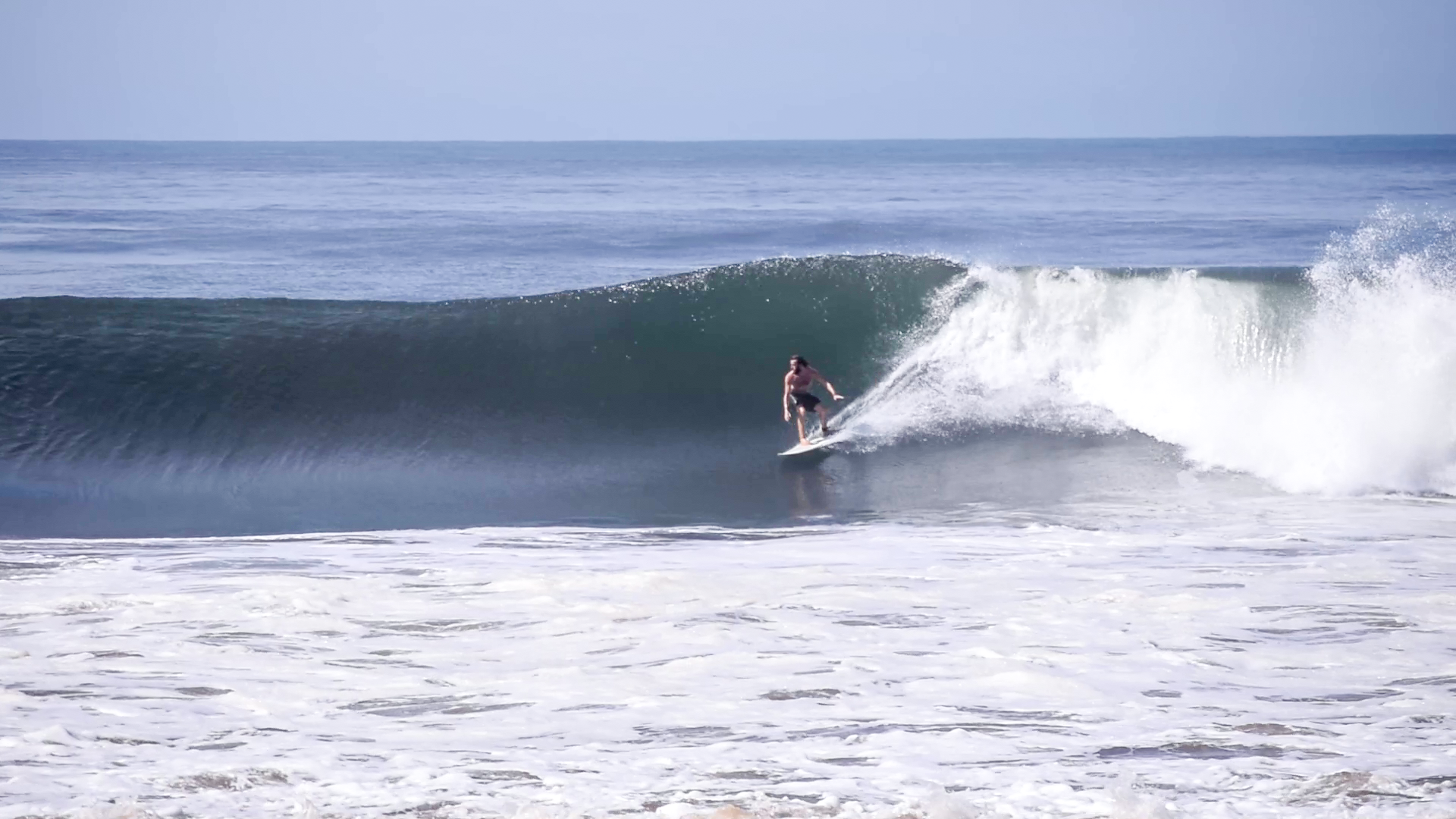
FINDING WAVES
Guatemala’s coastline is relatively short spanning a little over 300km long, so finding waves can be pretty easy. Access to some locations however is difficult requiring multiple buses as well as river crossings. Pending you aren’t in a rush, a surf trip to Guatemala shouldn’t be stressful.
The better waves throughout Guatemala are found around piers and river mouths. It’s easy to spot the river mouths and different setups via google maps, it’s also good to check out via the map for which roads lead to the coast from the highway. Also ask around. Like we’ve mentioned the locals are super stoked to host travelling surfers as the towns don’t usually see many tourists. Other than locals from the city who flock to the coast to escape the heat during holiday times, these places otherwise remain almost deserted.
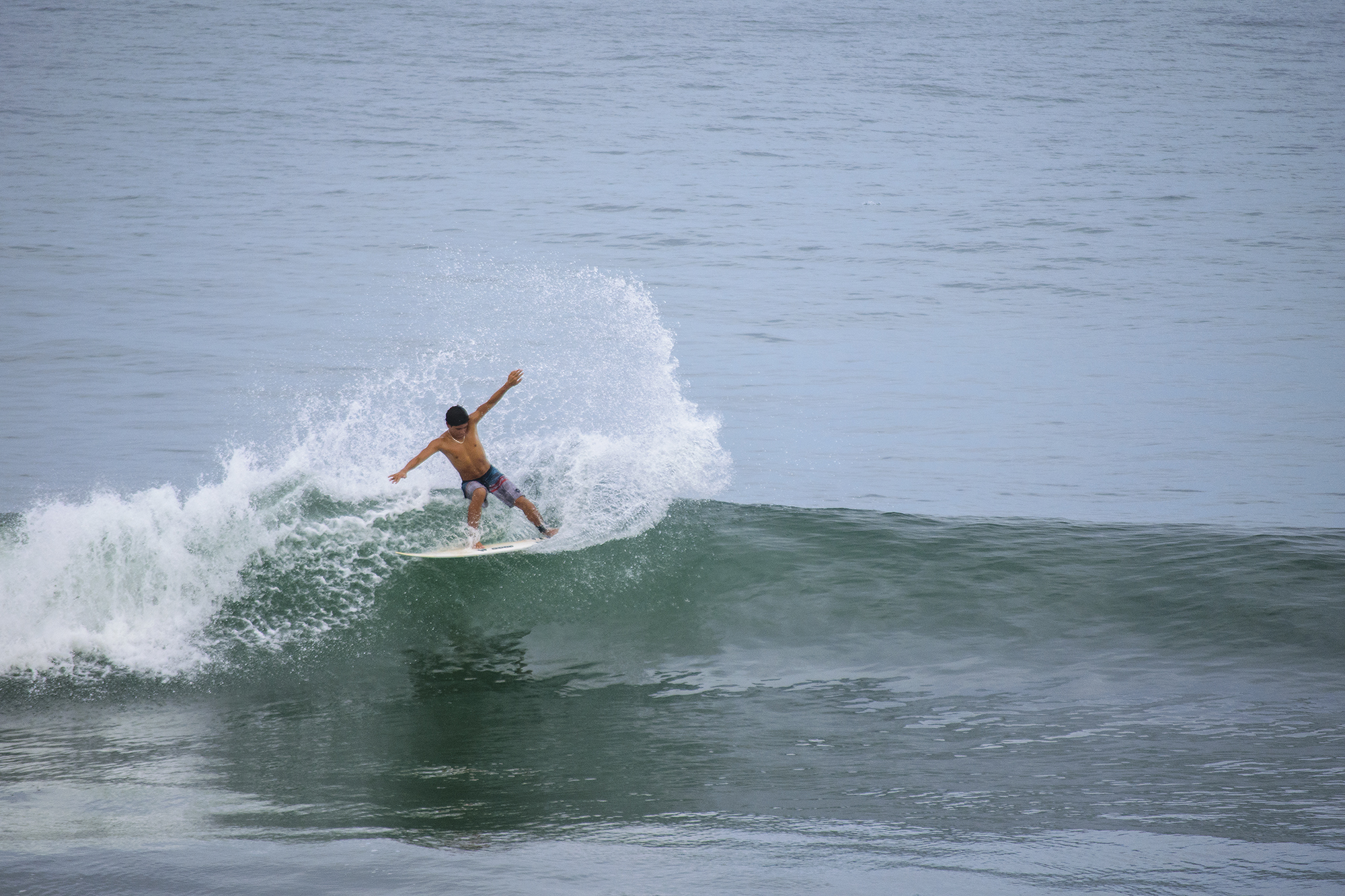
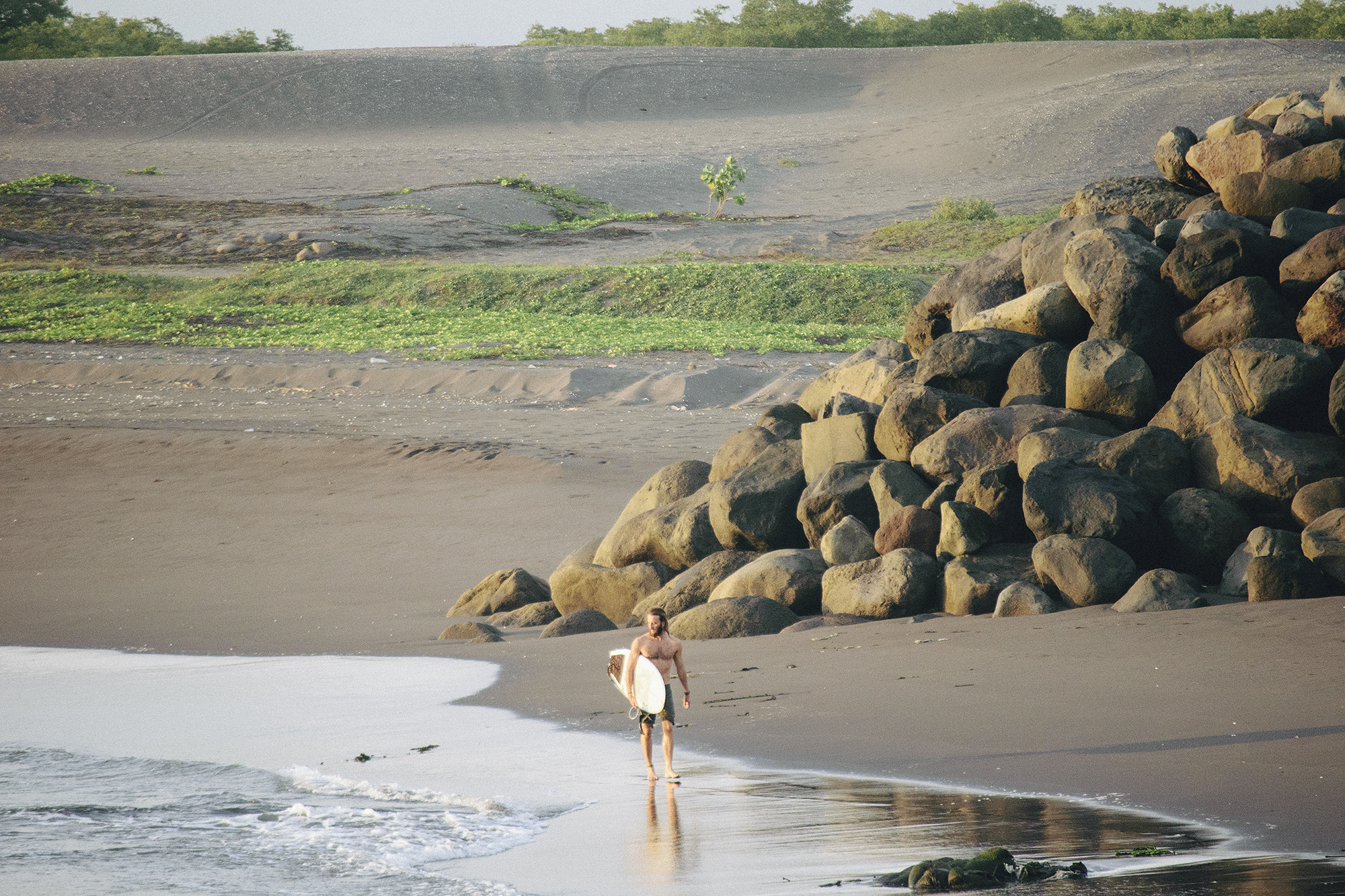
We suggest you follow the link here to check out the swell and current conditions for Guatemala and any other of your favourite spots.
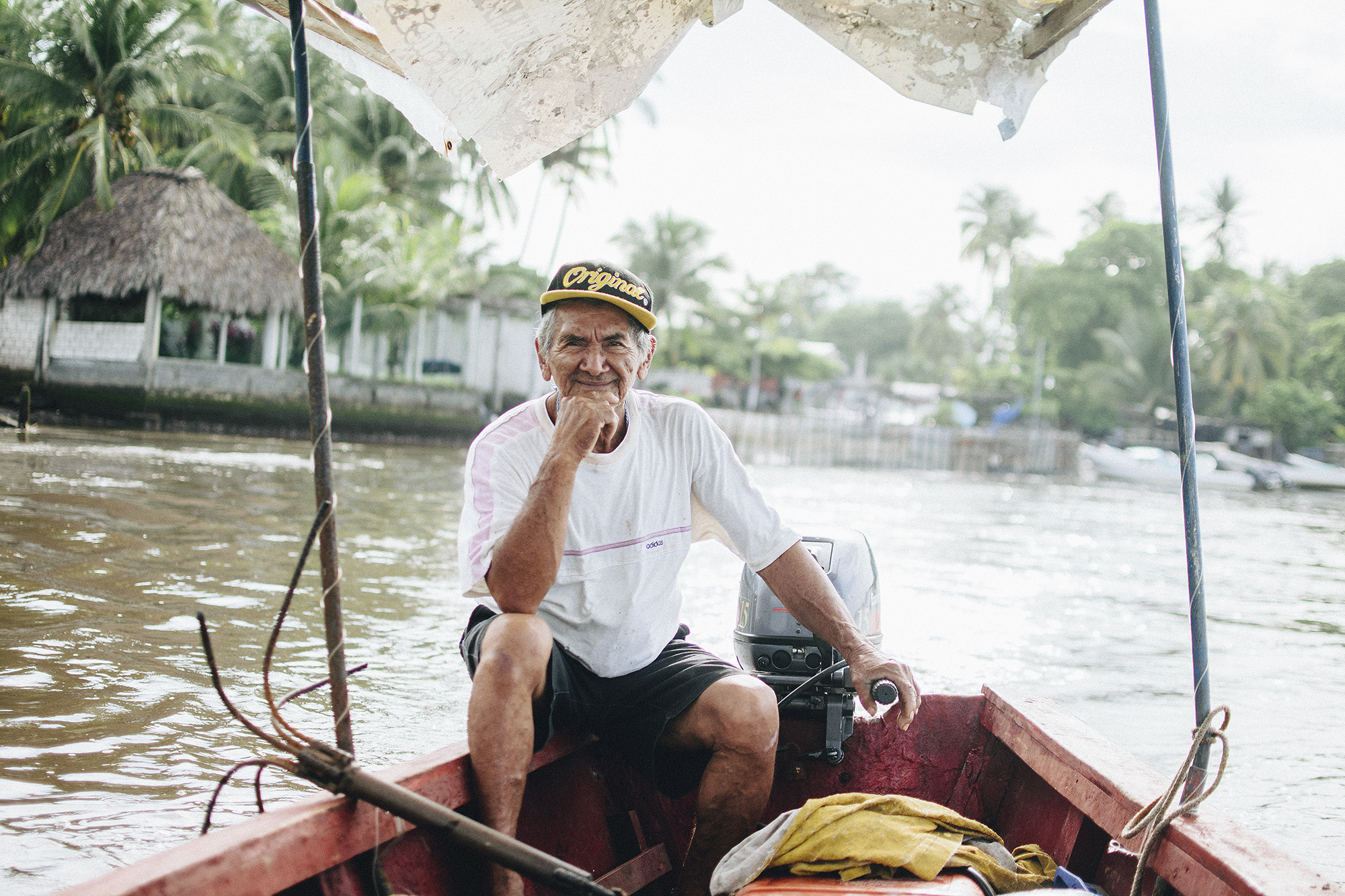
One other tip we have is to be mindful of surfing river mouths straight after heavy rainfall. Our trip to Guatemala was during wet season and we travelled all day on numerous buses to be at this one spot for the new swell. We arrived late and found a cheap hotel for the night. The next morning we woke early and negotiated with a driver to take us over the river in his boat.
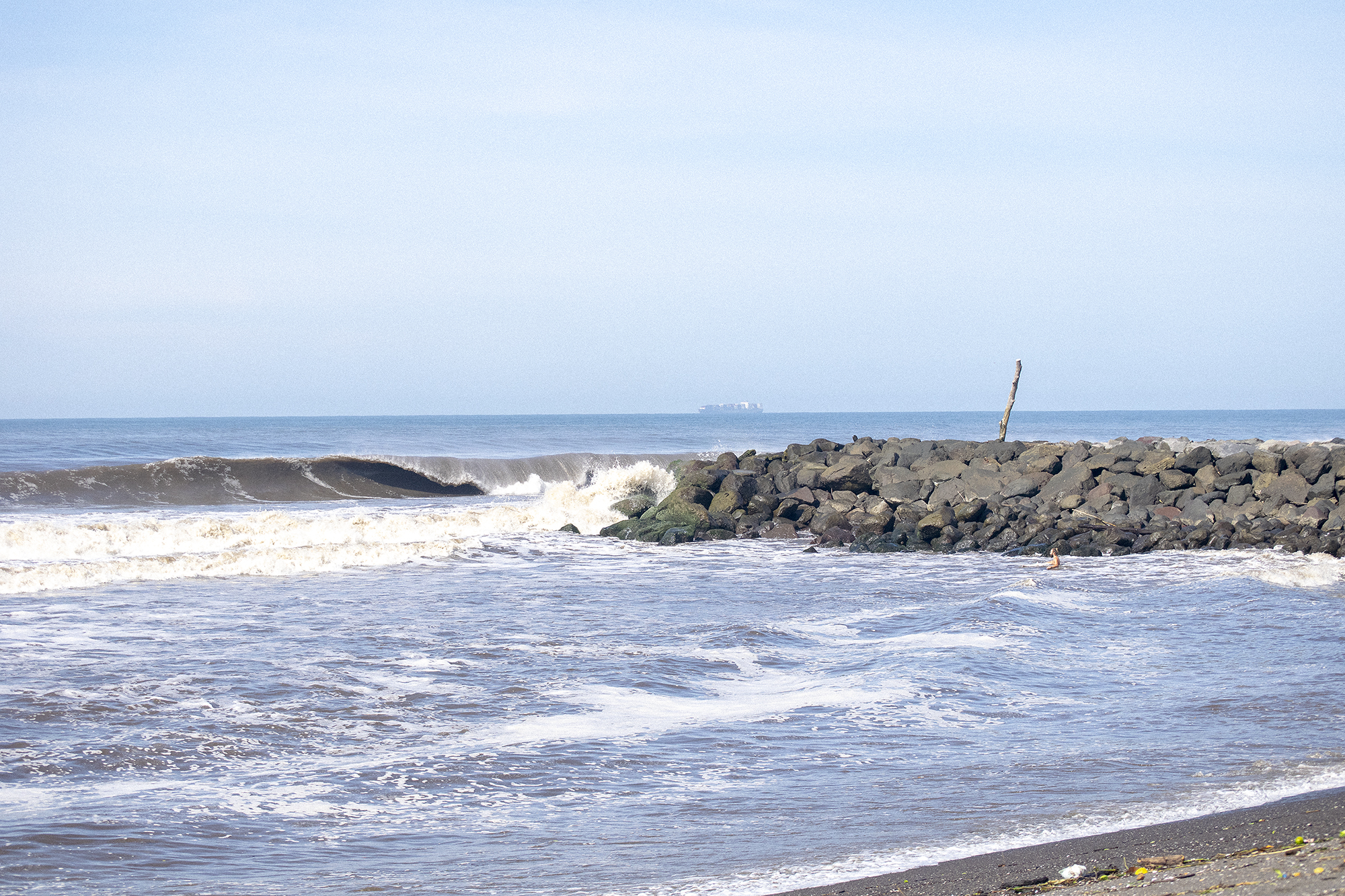
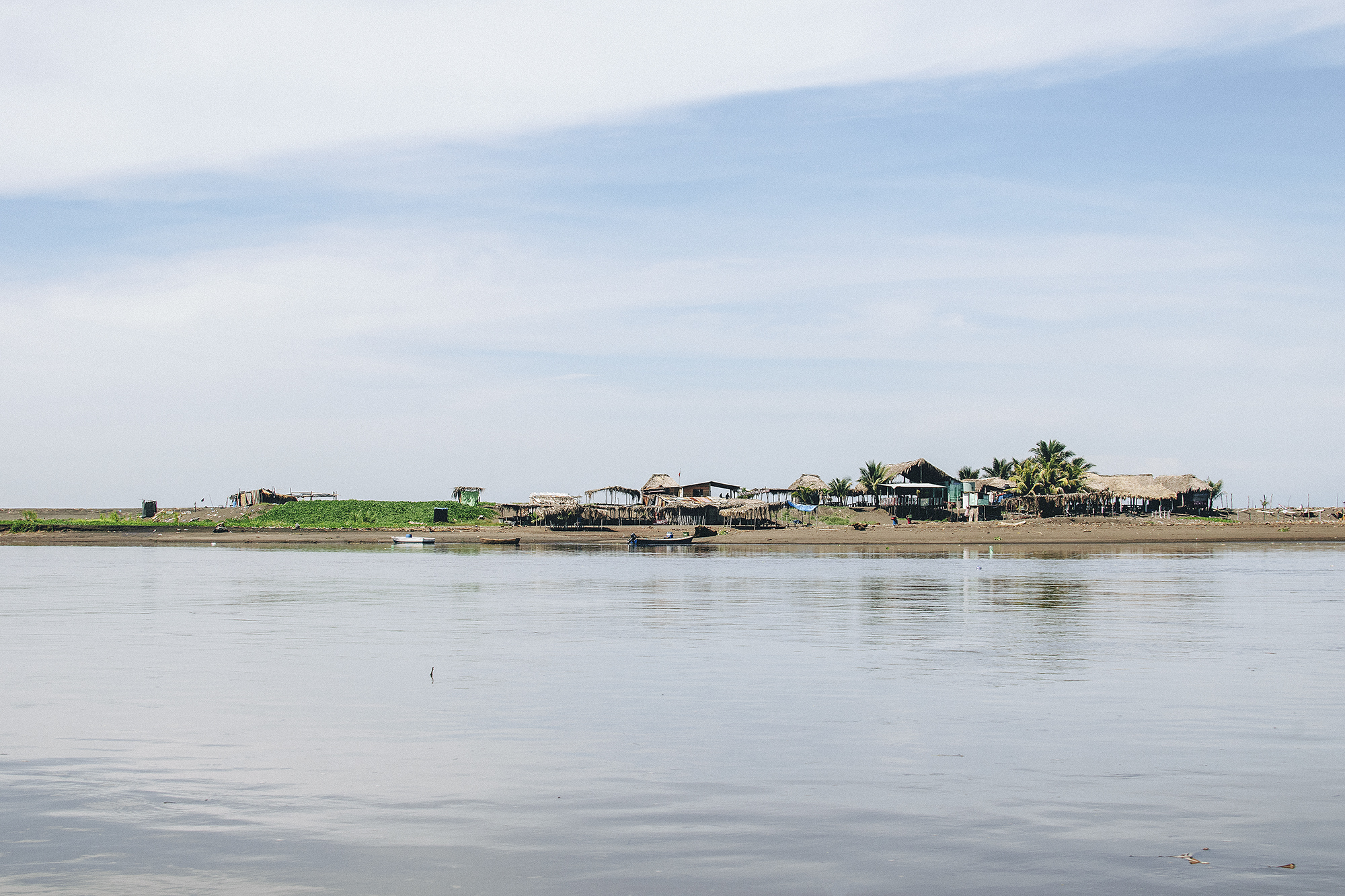
The first thing we noticed on the river banks was all the rubbish that’d been washed downstream from the rain and towards the sea. There was a thick sludge and foam starting to form as we approached the river mouth being churned up by the fast tide running out to sea. Once we were out of the boat it was clear to see it was pumping. Overhead, smooth, hollow and for obvious reasons there was no-one surfing - the water was like chocolate milk from the mud and rubbish of the river.
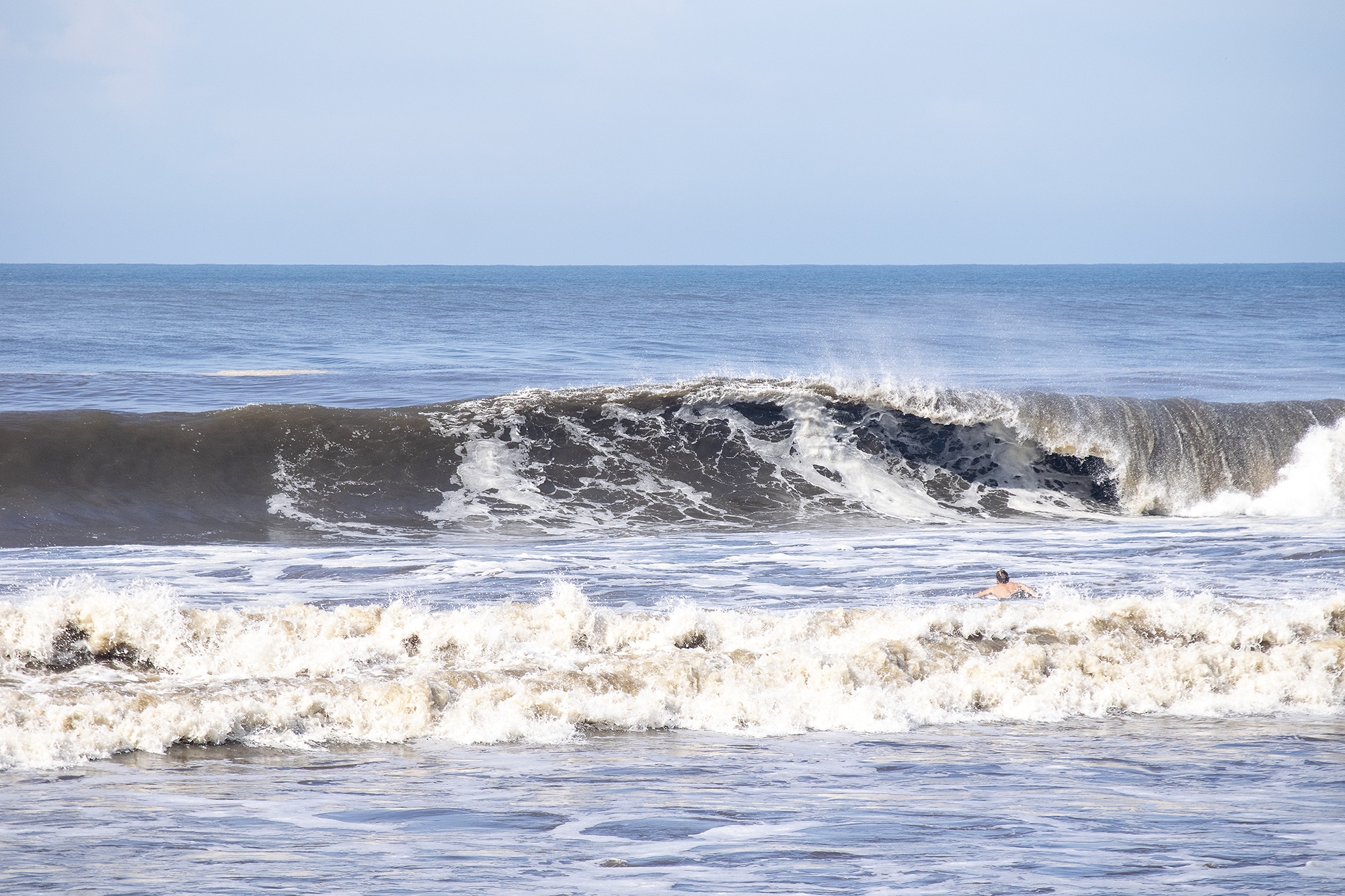
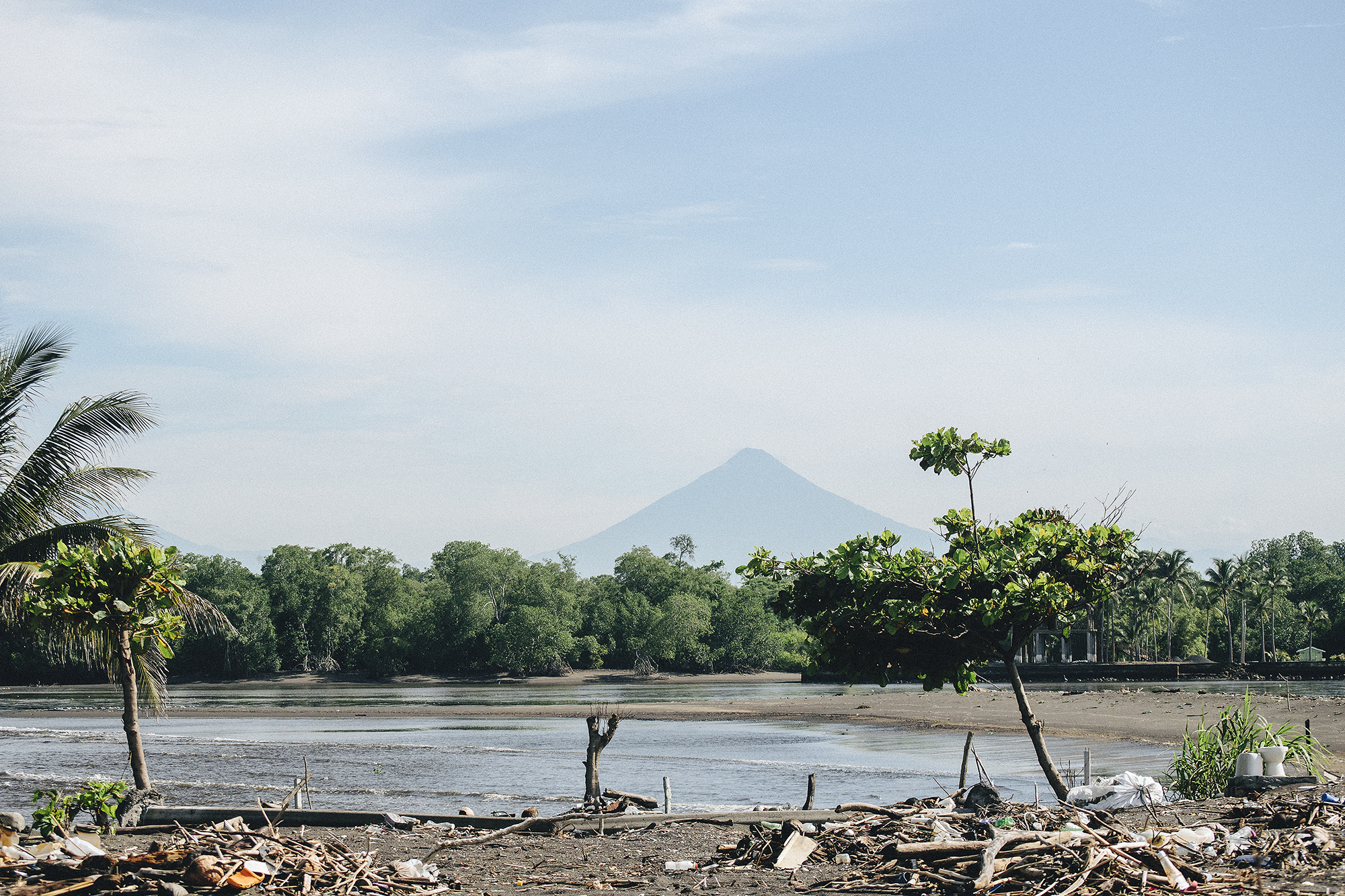
After some debate from the shoreline and talking to the local fisherman it was decided it was too good not to paddle out. Luckily we didn’t get sick. We just tried to keep our head above water and as soon as we got out we gave our ears a good clean out and rubbed antiseptic into any cuts. The waves were worth it in the end but if you find yourself in a similar position and not keen to paddle out it can be better to wait for the incoming tide when the water is cleaner.
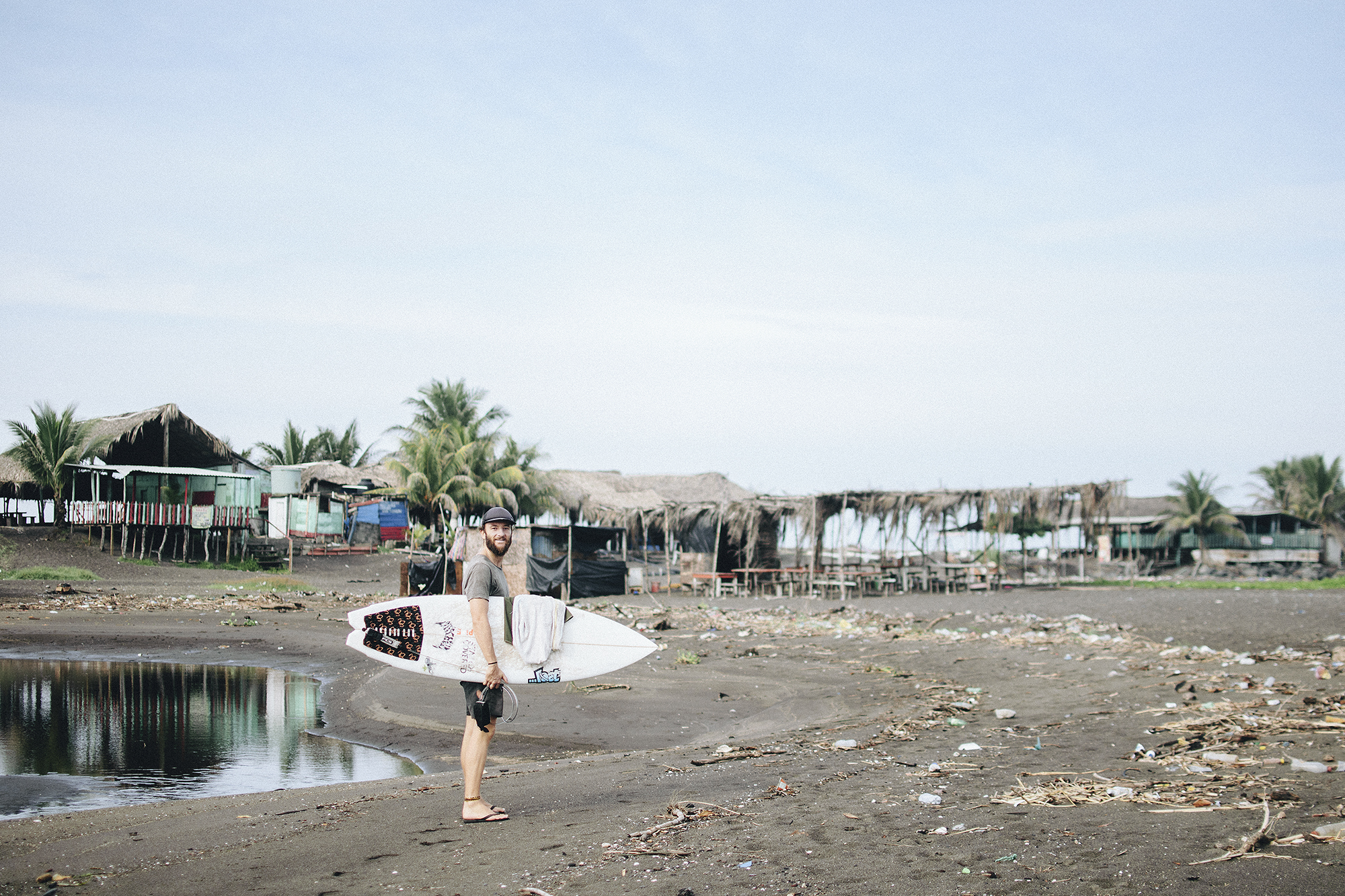
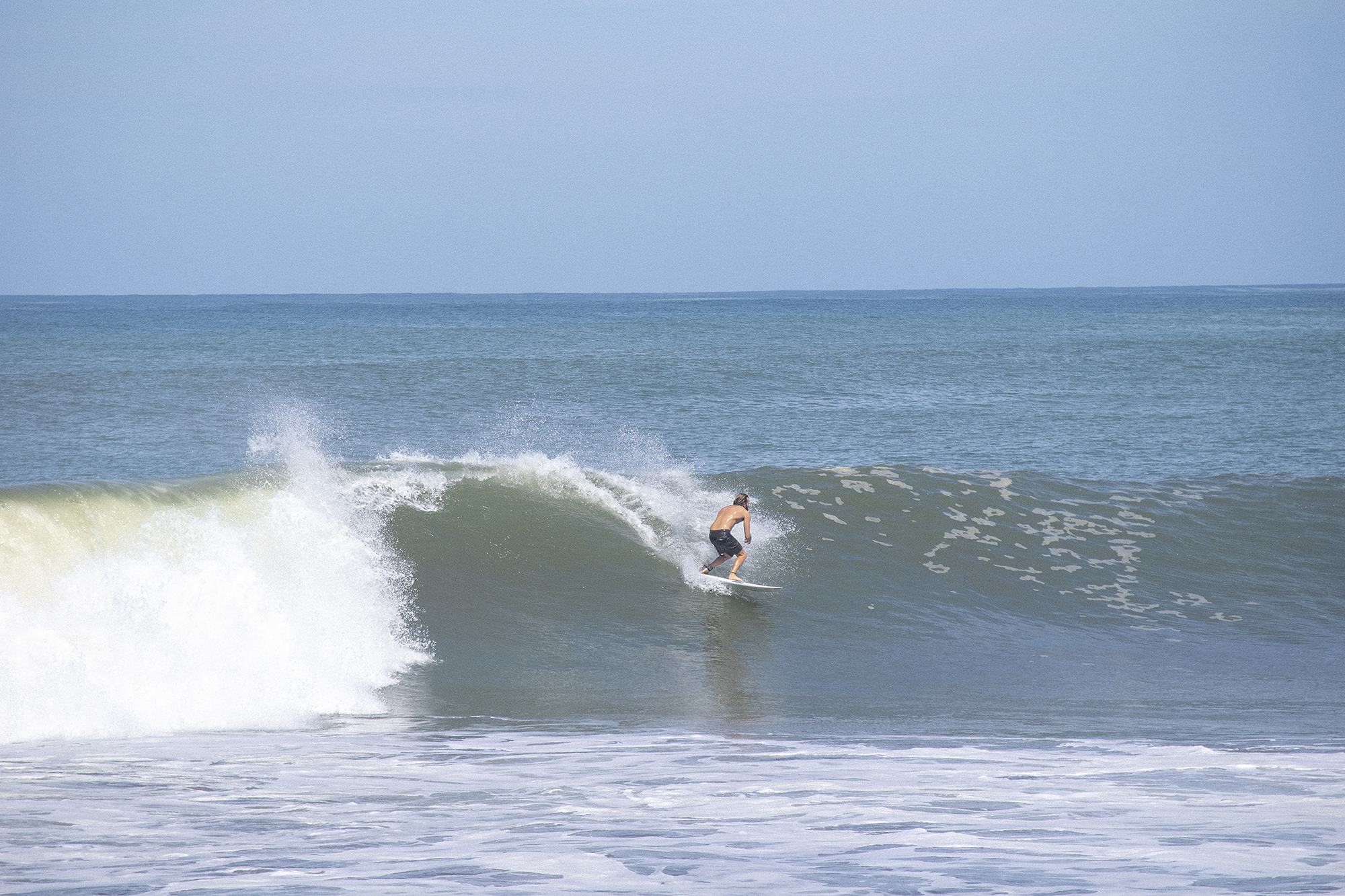
PRACTICAL INFORMATION
Travelling with a surfboard: If you are weighing up the cost of flying with your surfboard vs purchasing or even renting a board once you arrive in Guatemala, then this may assist with your decision. Most airlines will charge anywhere from $25 to $150 per flight for a surfboard. It also depends on your mode of transport once you arrive in Guatemala. If you have your own car or van then it may be worth taking your favourite surfboards from home. However, if your main mode of transport is going to be bus, keep in mind most bus lines will more than likely treat your precious quiver like any other baggage item, so be prepared fro dings, and plenty of them. It may be worthwhile buying some cheaper local boards.
Telephone: We didn’t get a chance to test out Guatemala’s telephone network however we understand it is moderately-developed in comparison to other Latin American countries. Prepay cell phones are a simple way to communicate and have no lock in contract. SIM cards each cost between US$3 and US$10 and sometimes include some data within that.
Internet: Just about every town and city in Guatemala has at least one Internet Cafe. Look for signs reading “Acceso a Internet” or “Cibernautica” or “Cibercafe.” Charges range from approx. US$1 an hour to US$3 an hour, depending on the location. Most restaurants and hotels offer free Wi-Fi.
Exchanging Currency: Guatemala has plenty of ATMs in larger towns and cities which dispense the local currency Guatemalan Quetzal. The current rate is just under 8 Guatemalan Quetzal to 1 USD. Many of the restaurants, hotels and shops in Guatemala accept credit cards. During business hours, banks and Casas de Cambio will buy traveler’s checks and foreign cash from you as well, although it does take time, so you’re better off using ATMs.
Travel Insurance: We recommend that you take out adequate travel insurance when you are visiting Guatemala. Health services and treatment normally covered under other countries medical system are not available in Guatemala. Generally, travel insurance MUST be purchased within the country where you are a resident BEFORE travelling.
Medical Attention: Most larger towns and popular tourist locations have local, government-run, health centers. Private clinics can also be found, both with English-speaking staff available.
There is a limited amount of surf shops in coastal towns renting or selling a small selection of second hand boards. Also keep an eye out on Facebook groups for locals selling and renting boards.
There are a few surf camps in Guatemala that we noticed when passing through the different towns. We personally have not stayed with any of these camps so we cannot comment or provide a review. We’ve listed them below:
We are sure they’d be more than keen to assist you on the waves.
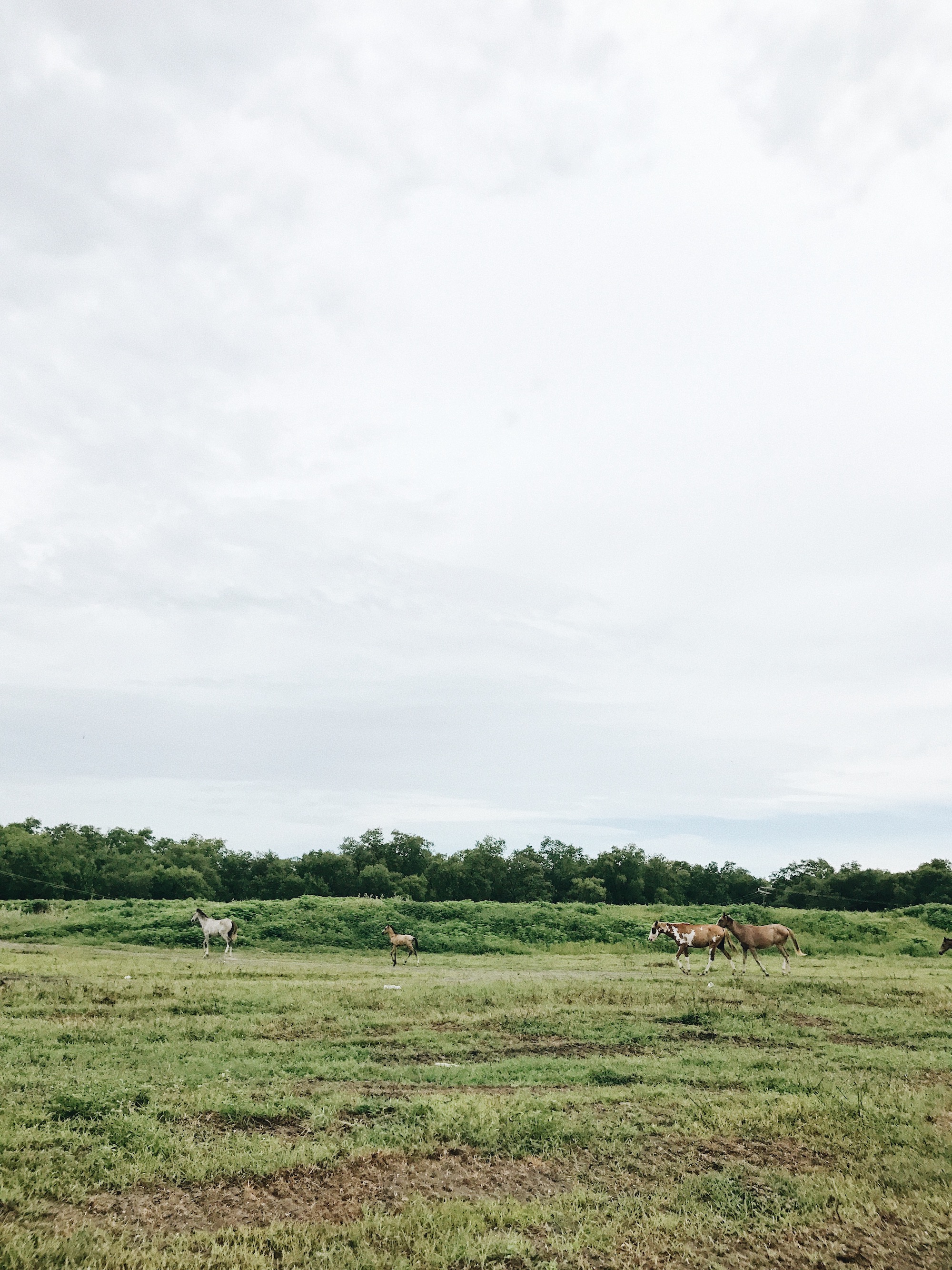
At the time of our stay there were no yoga studios on offer on the Guatemalan Pacific Coast. If you need someone to practice yoga with, ask around a few of the traveling surfers and we are sure you will come across a yogi willing to offer their services for a small fee or may even just be happy to have a yoga buddy to practice with. We also suggest you contact the local surf camps to arrange a class.
Guatemalan food is simple, tasty and economic. Traditional dishes stem back to the Mayan culture origins and are based around corn, chilli, beans, fried banana known as plantain, tortilla soups and basic salads. In market places you can find a wider variety of beautiful salad dishes that are served on tostadas (fried tortillas). As we don’t eat meat and dairy our meals eating out at restaurants became fairly repetitive due to the limited style of foods. The markets also have a large and amazing selection of seasonal local fruits and vegetables. We’d often shop our own food and prepare our meals back at our Guest House.
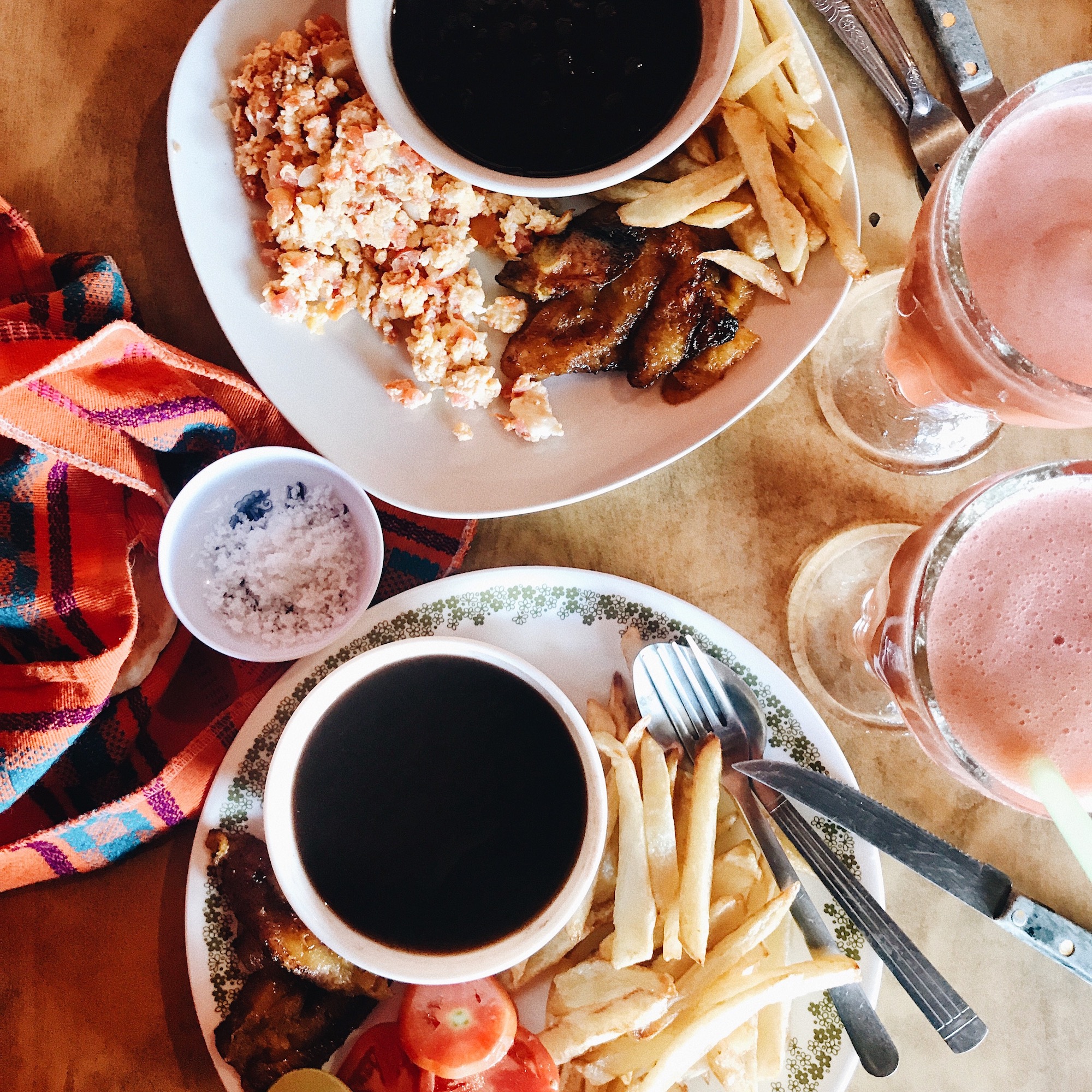

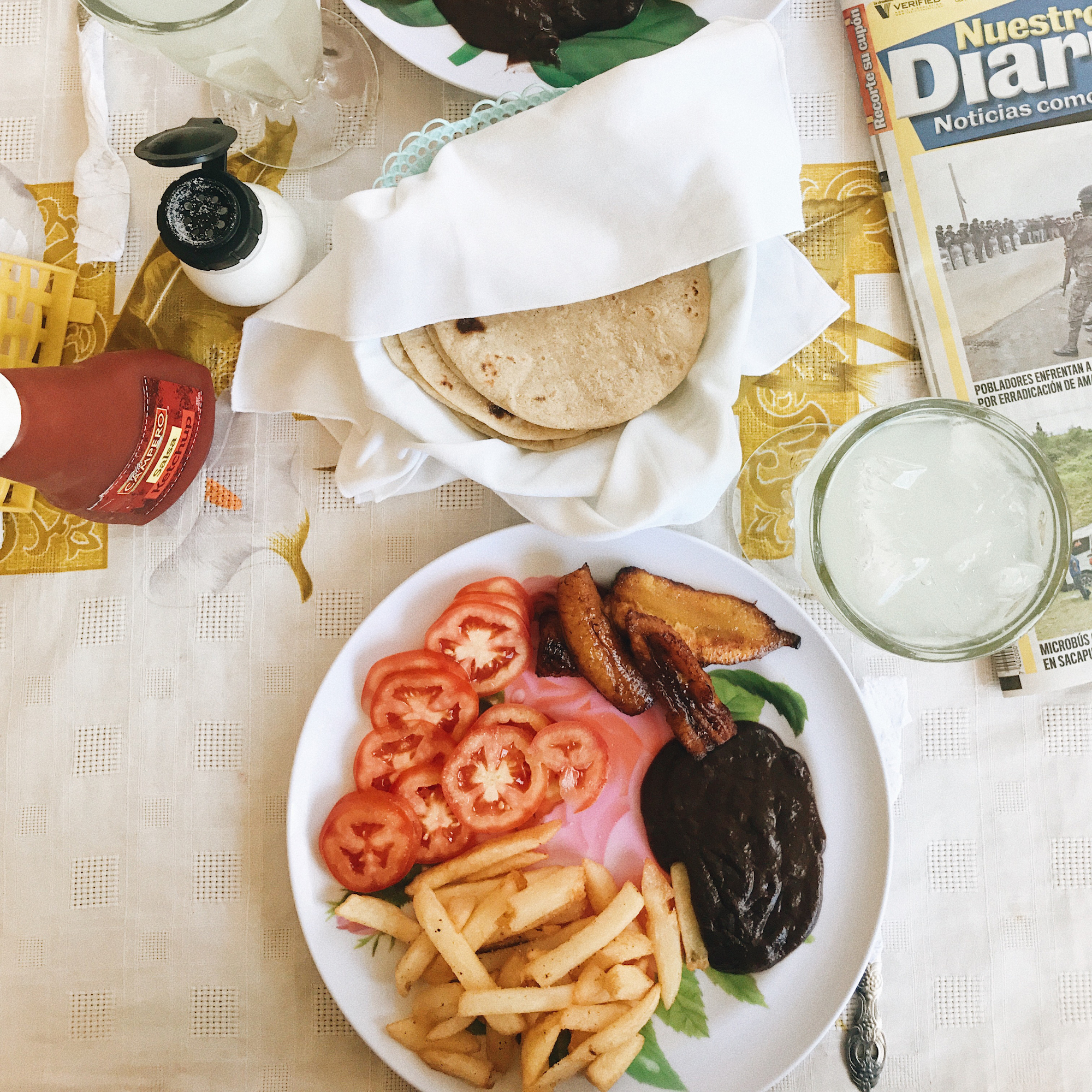
Throughout Guatemala there are many decent hostels, although not so many along the coast. Instead you will find more family based Guest Houses. These guest houses are similar to small family run hotels where you usually share the family kitchen. Of course you can also find larger hotels with more private facilities and other options available though Airbnb.
And of course, Guatemala is the perfect destination for v a n l i f e. We can’t wait to give it a try!
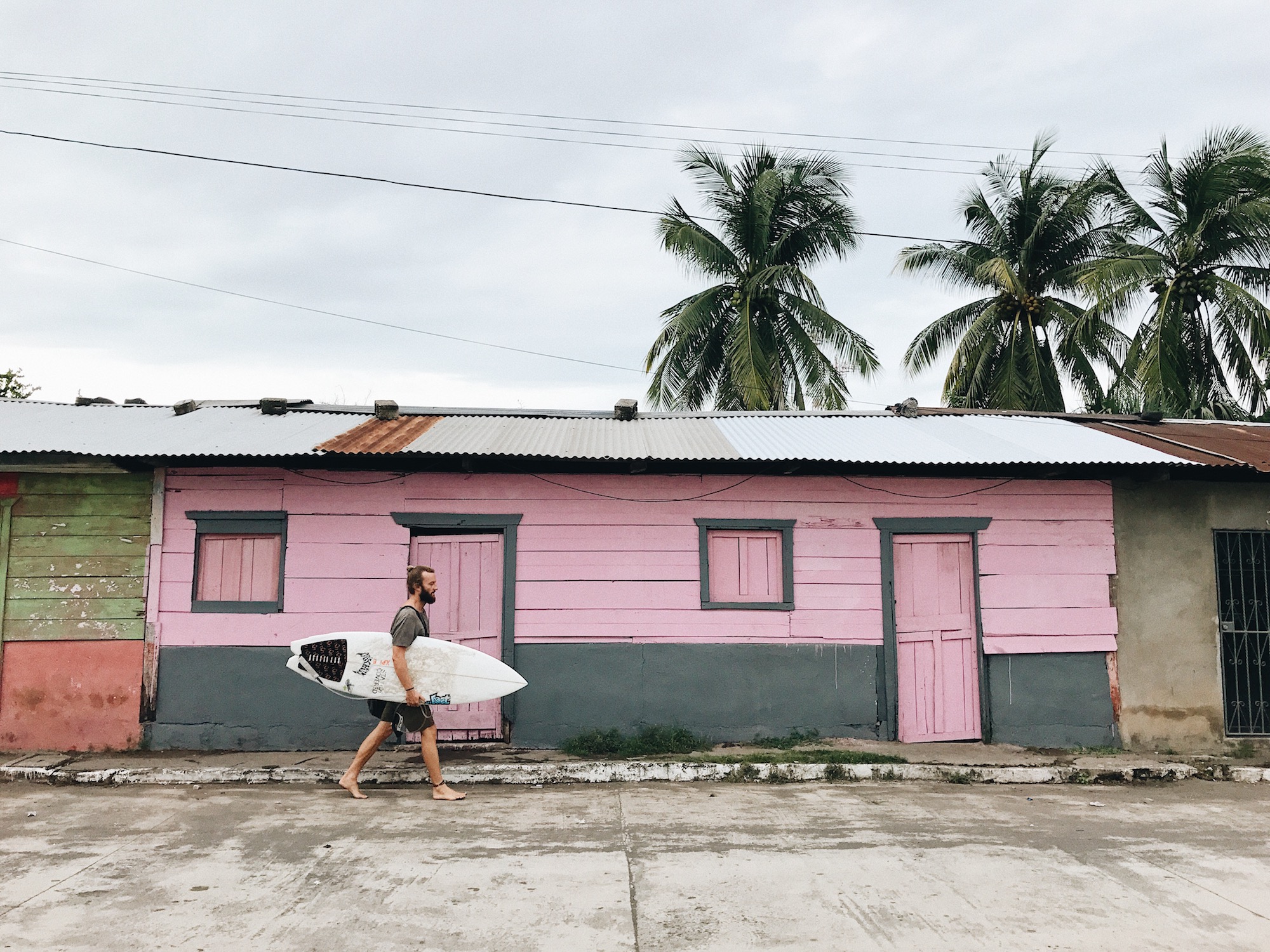
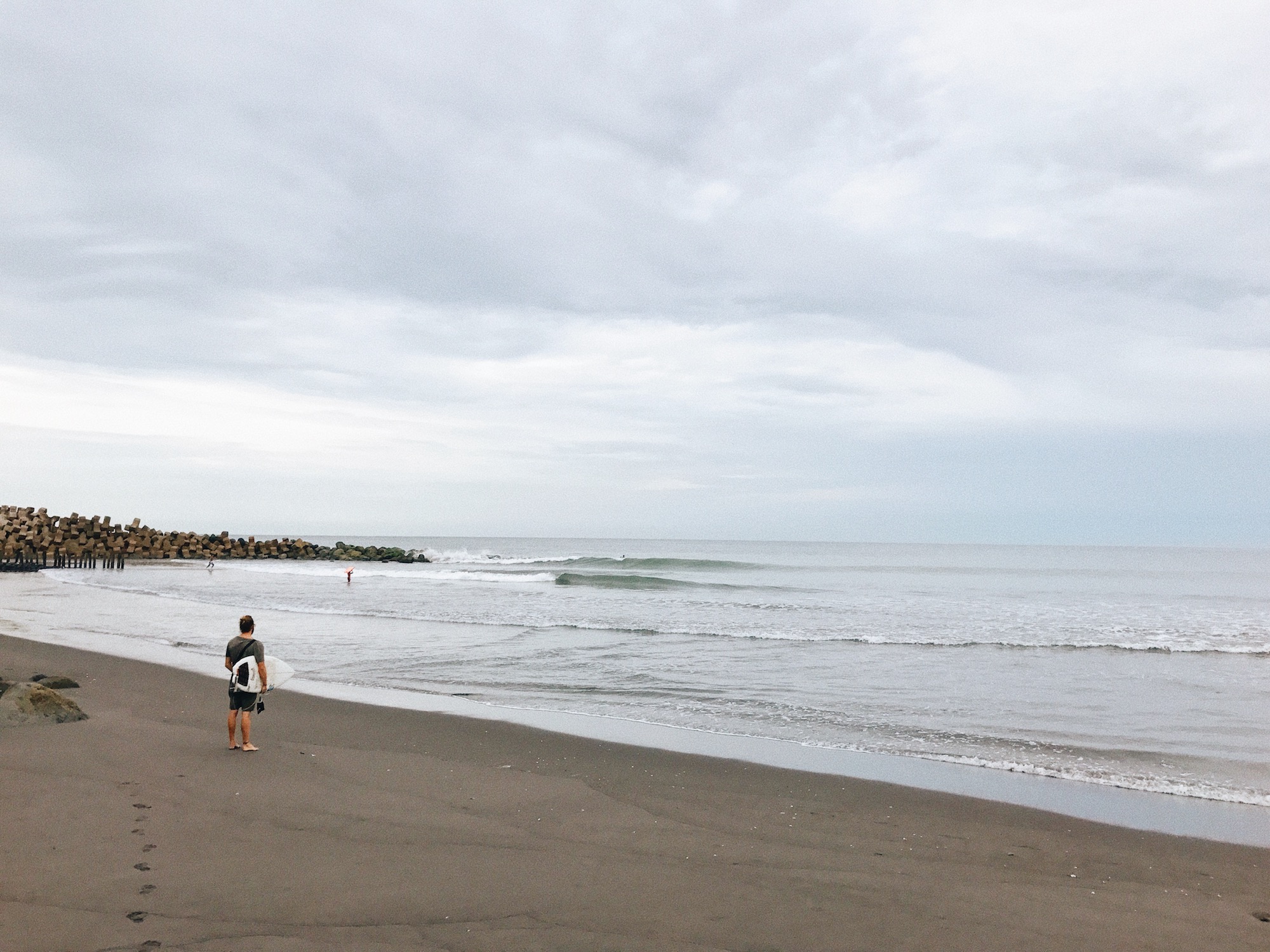
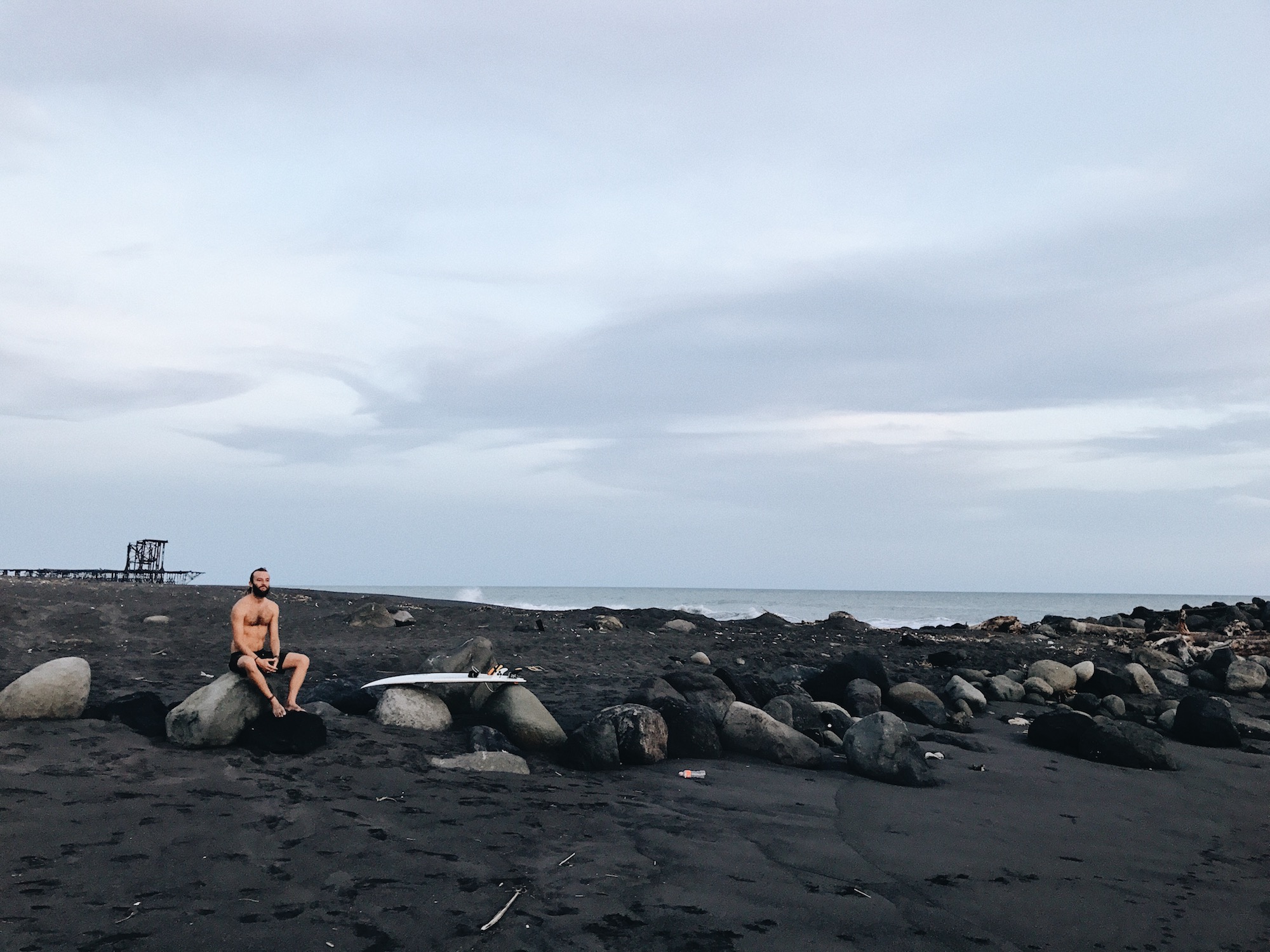
You’ll never be bored while waiting around for swells. Guatemala boasts some of the most incredible natural, cultural and historical sites we’ve ever seen while travelling. Discover ancient Mayan Ruins of Tikal hidden amongst the northern rainforests, climb to the 4000m high peak of Acatenango Volcano whilst watching on at the very active Volcano Fuego or bask in the beautiful 300m long naturally forming limestone pools of Semuc Champey. So much to do and see in this incredible country. More posts below coming soon.
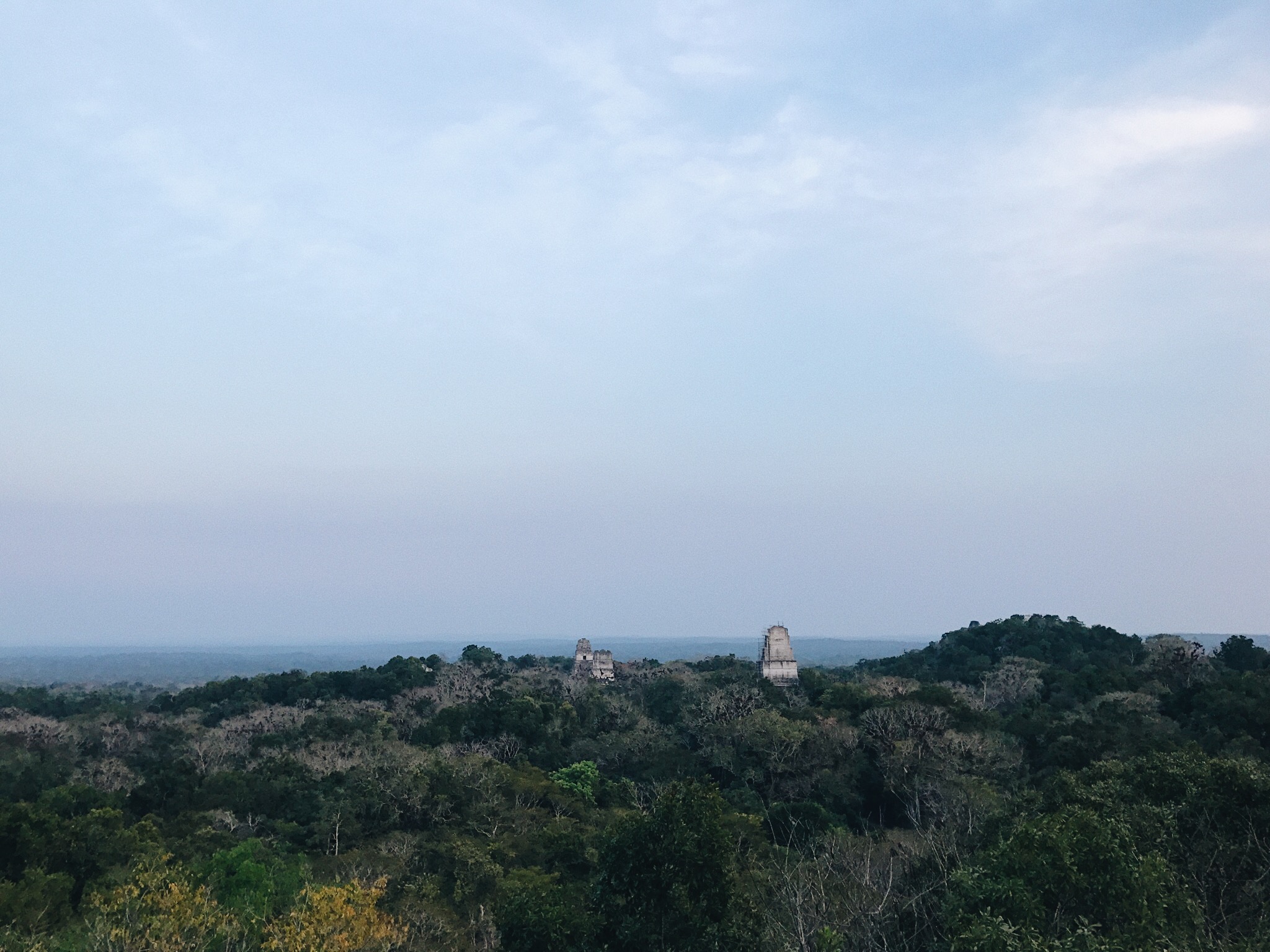
MAYAN RUINS OF TIKAL
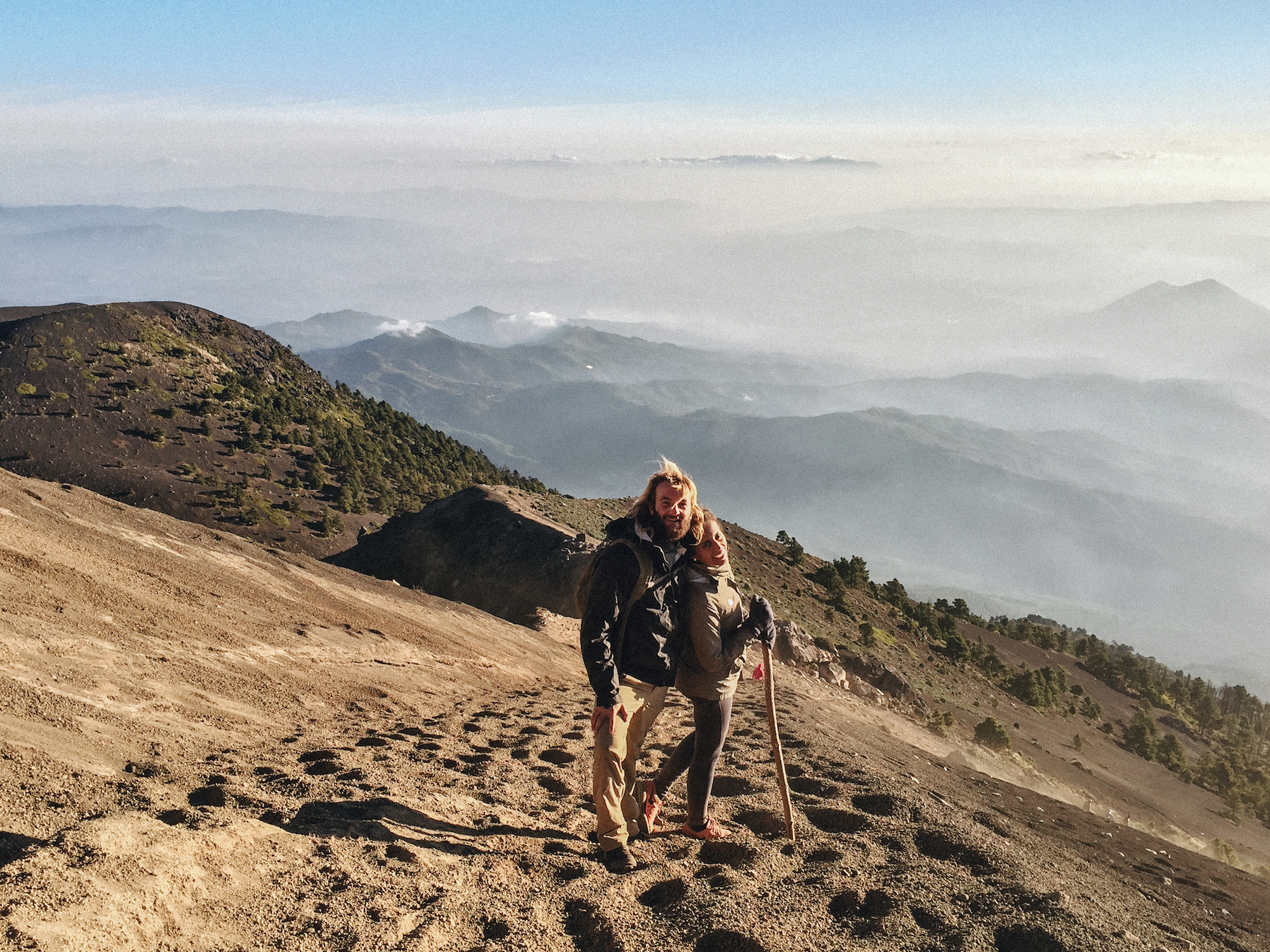
VOLCANO ACATENANGO
